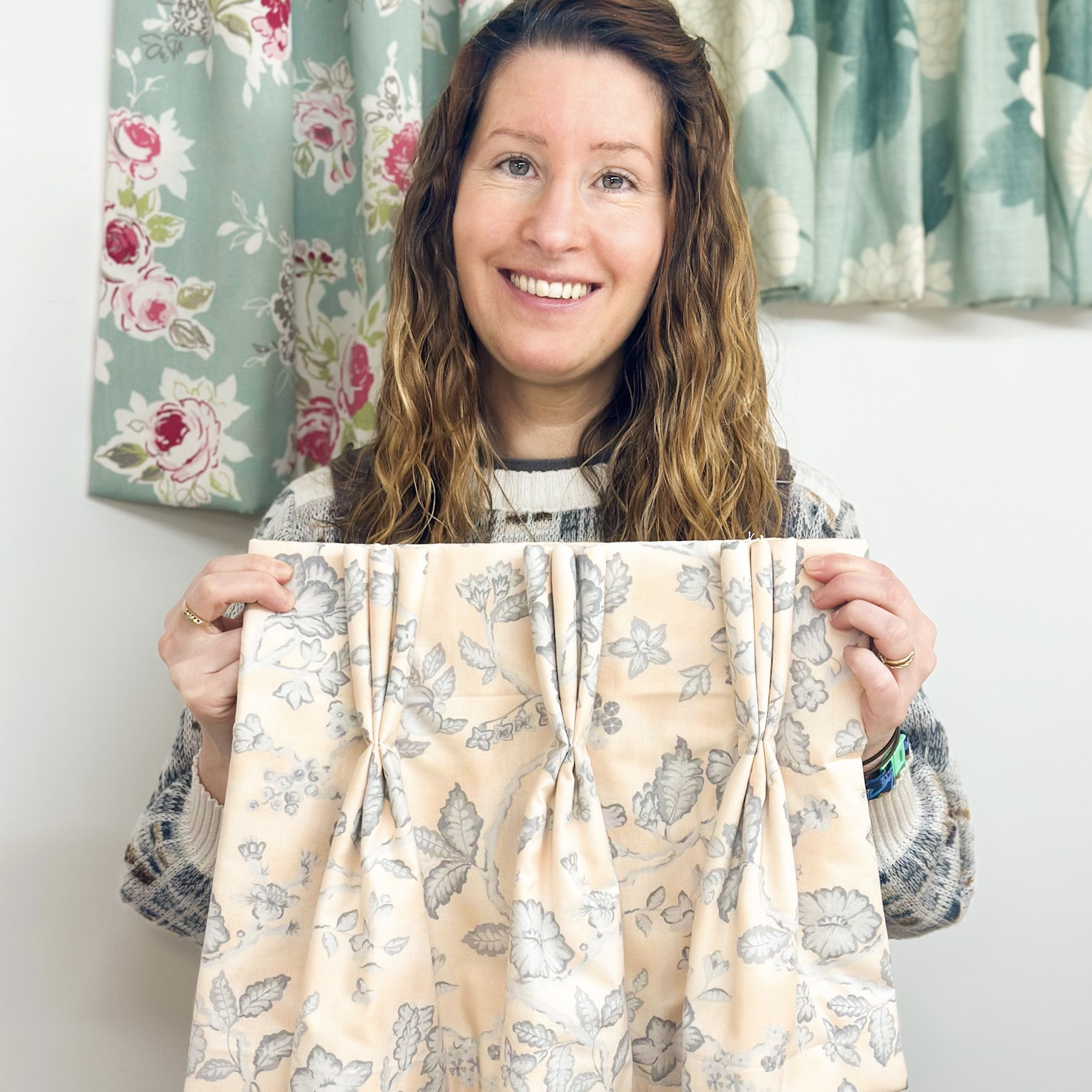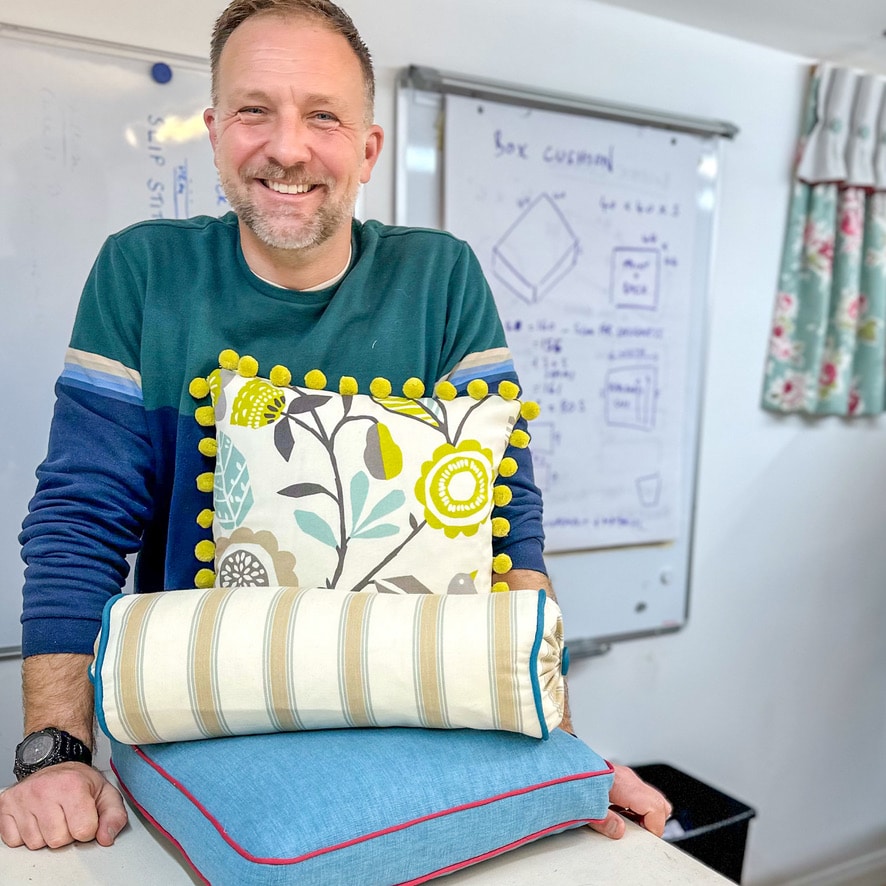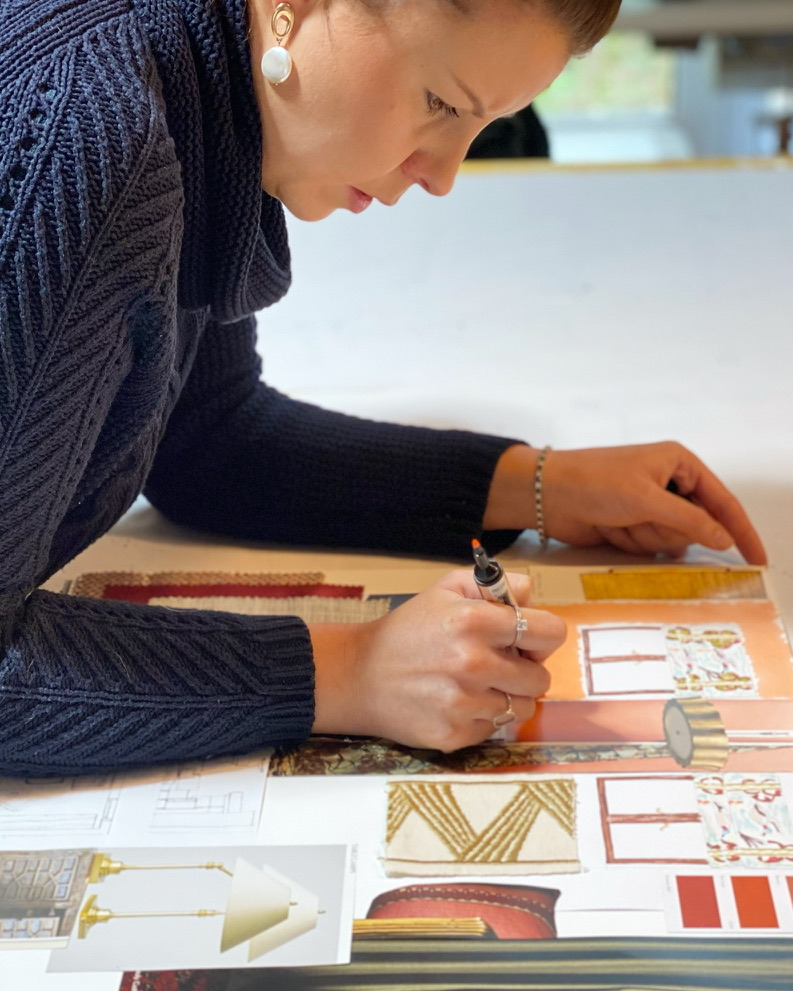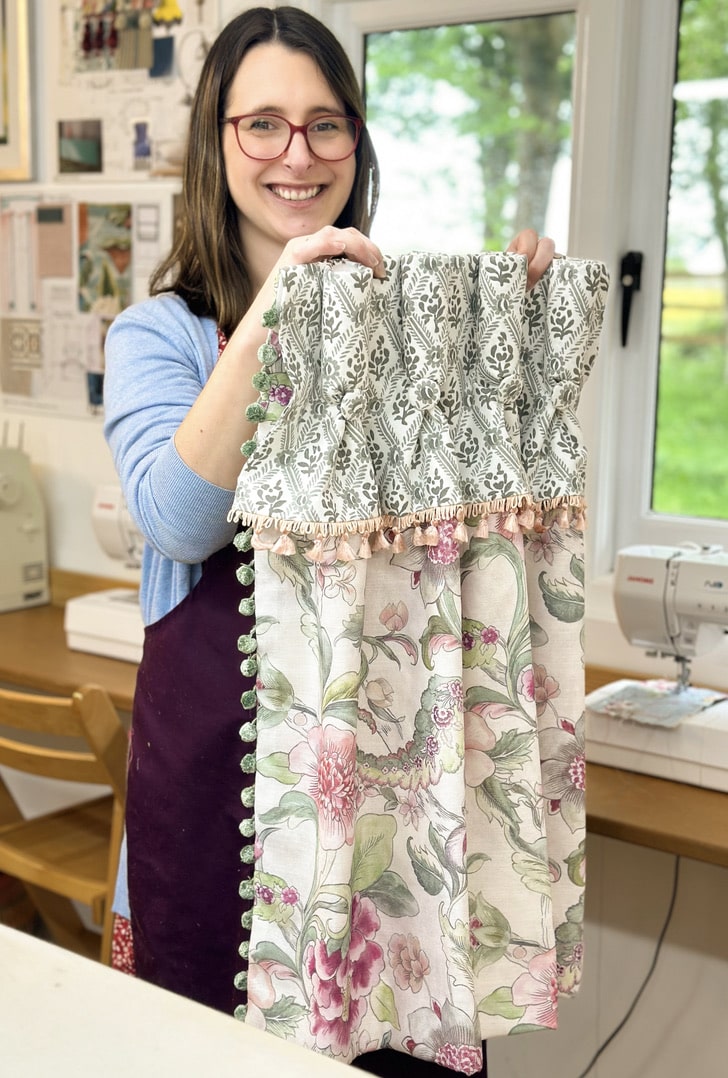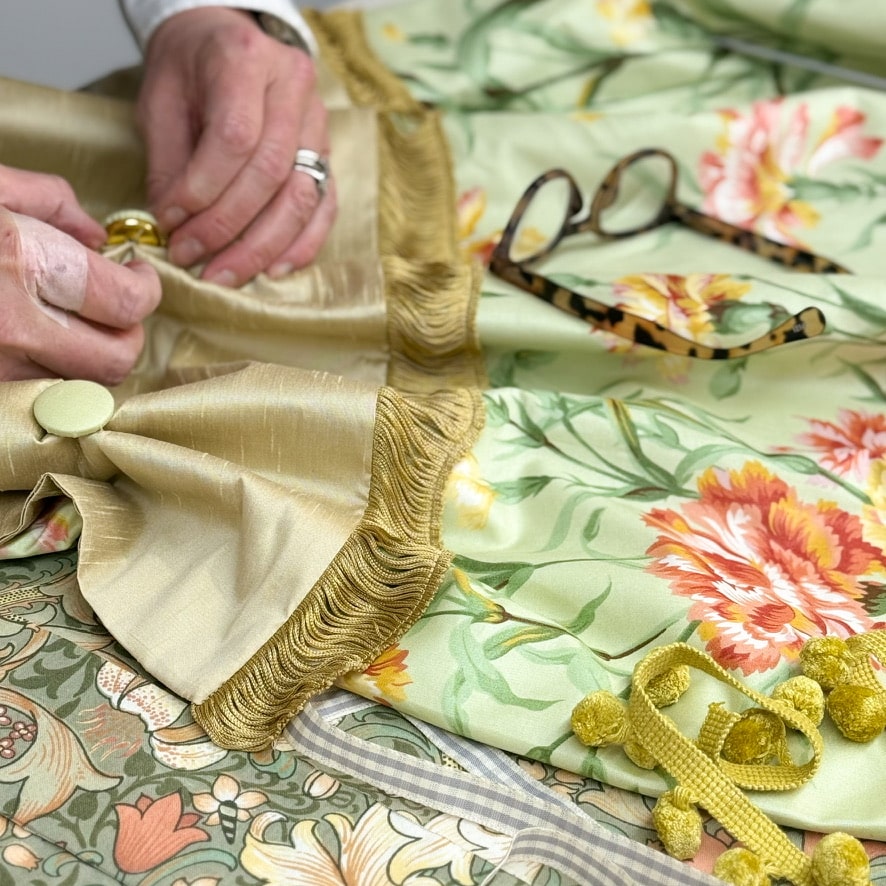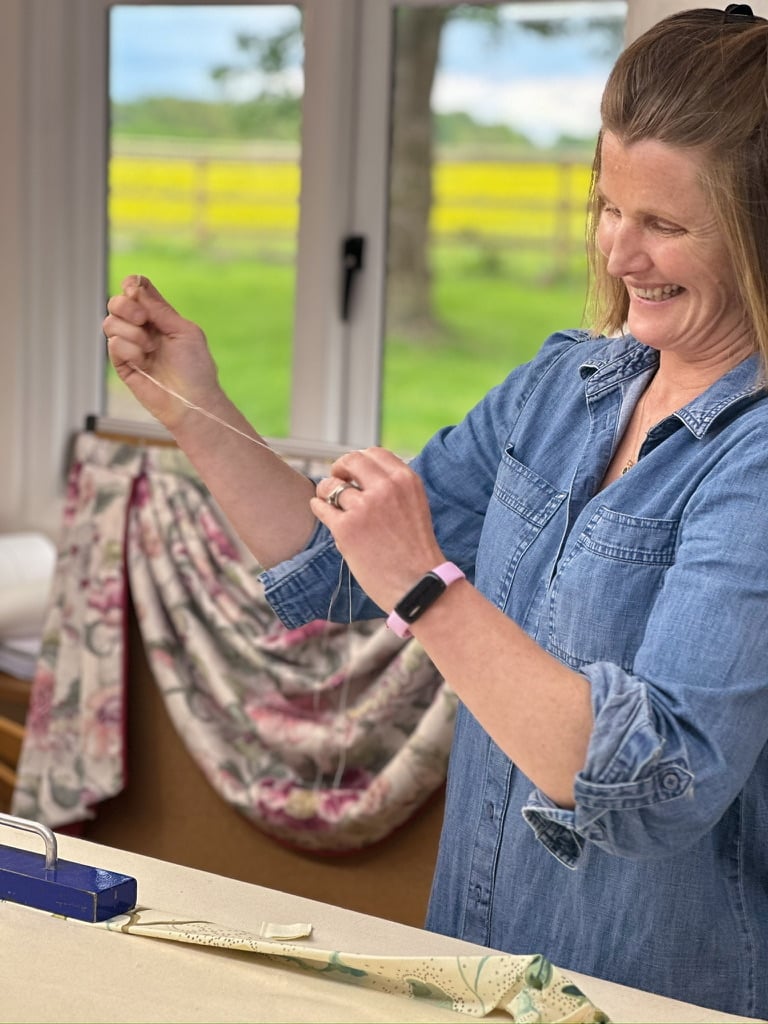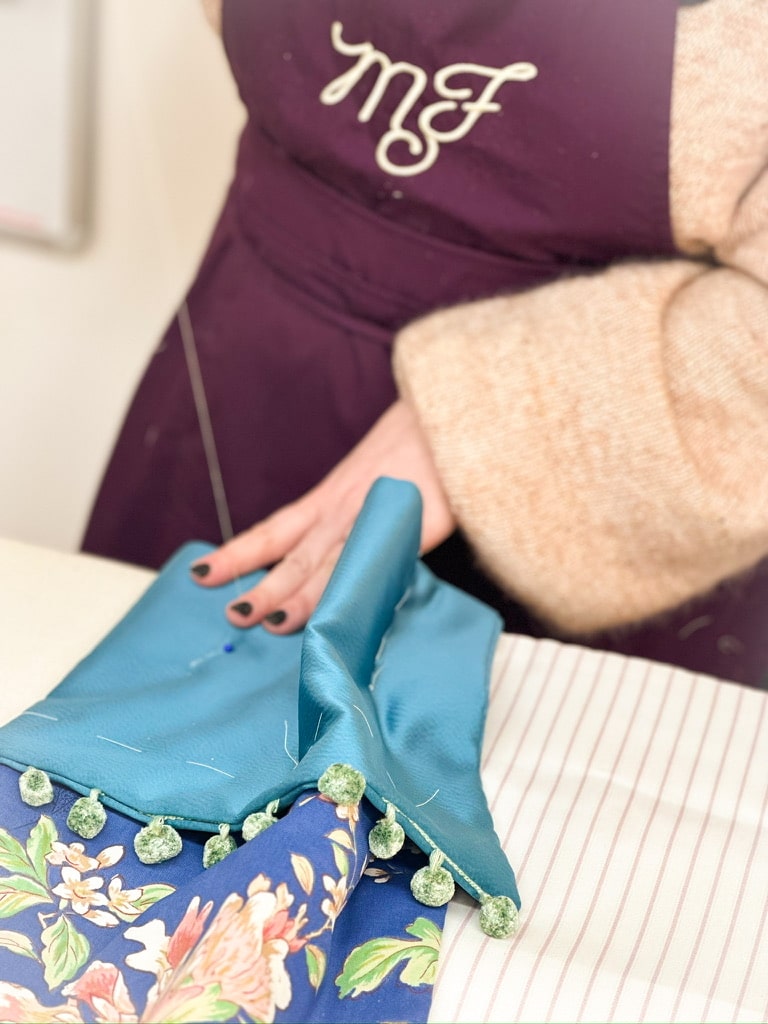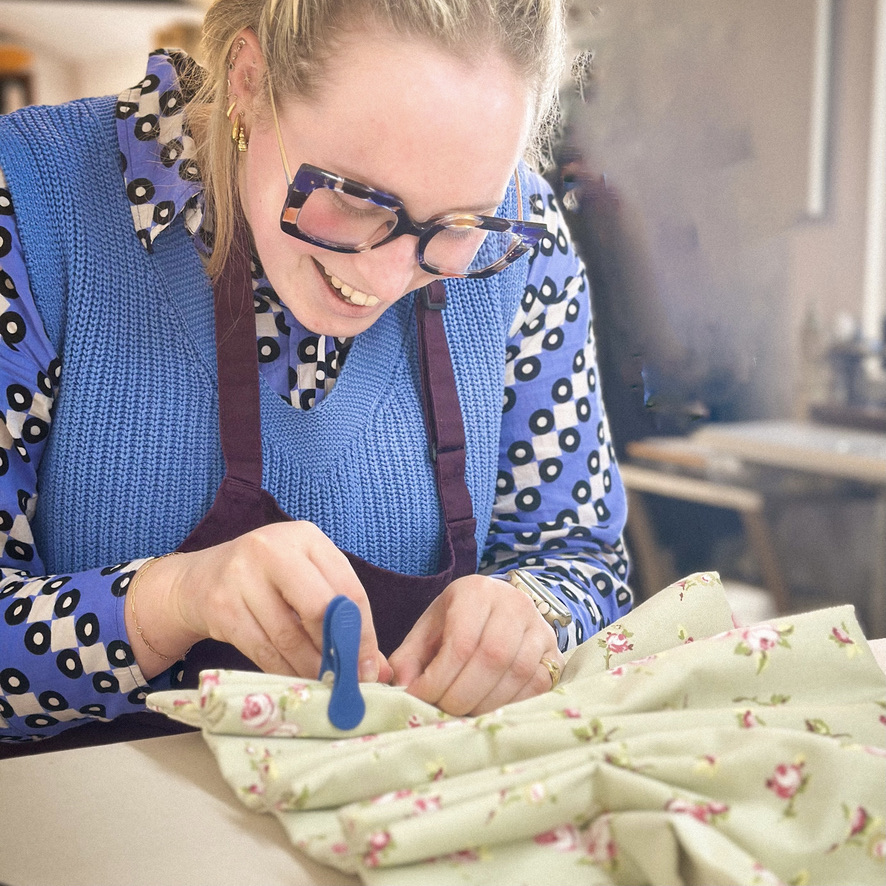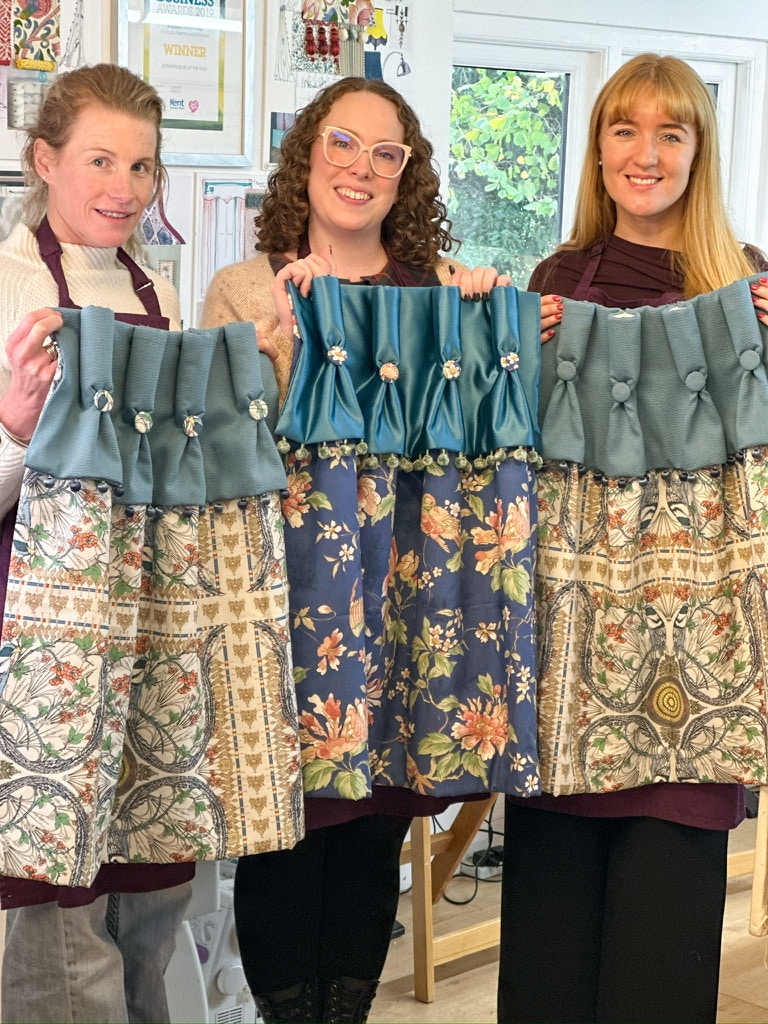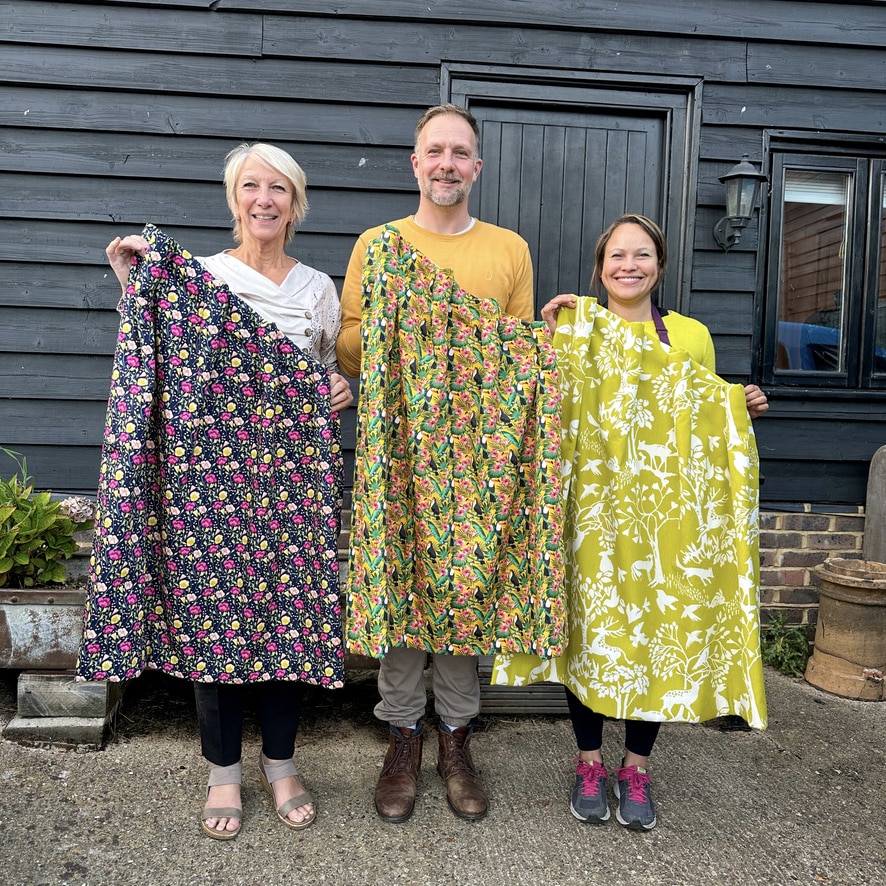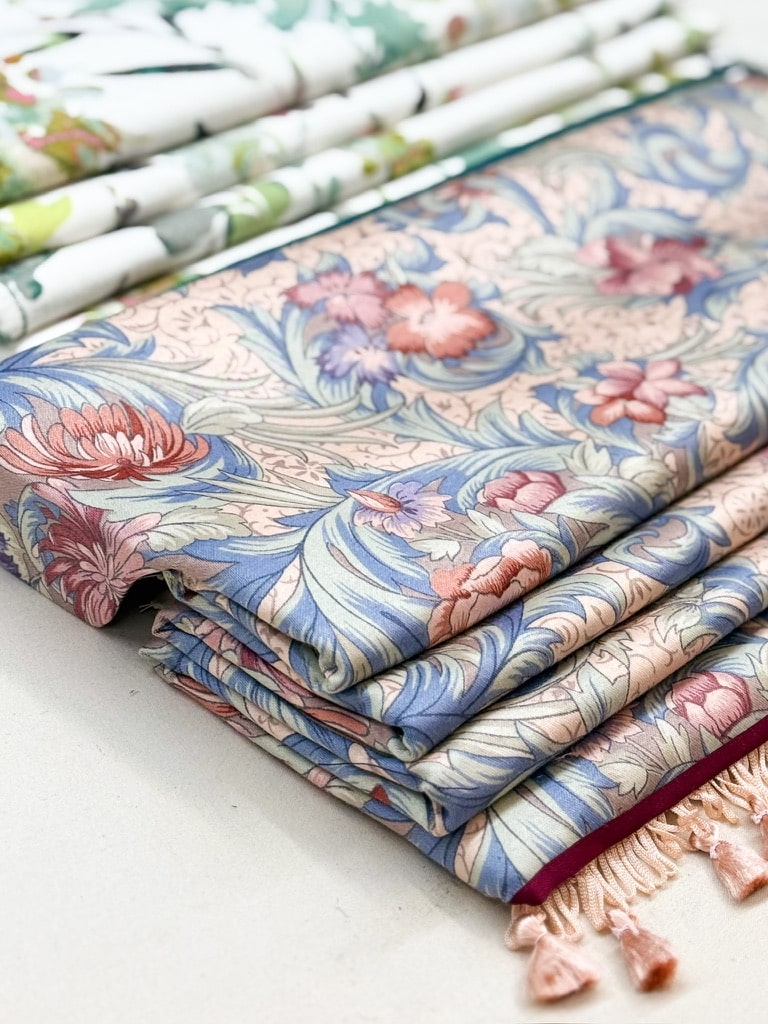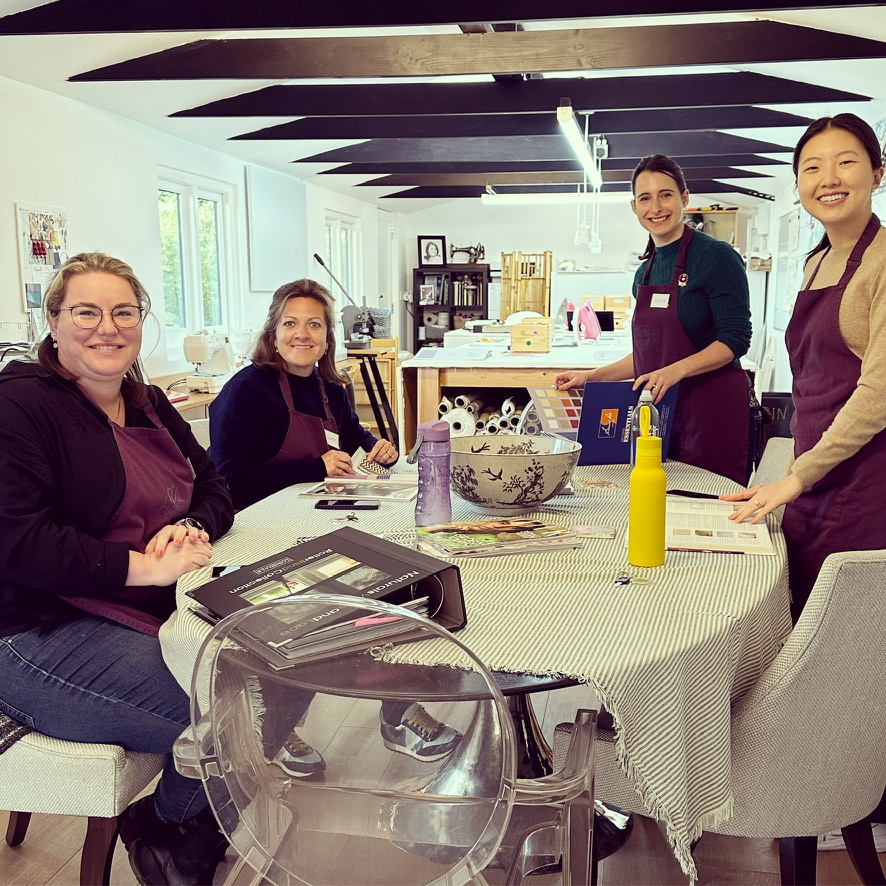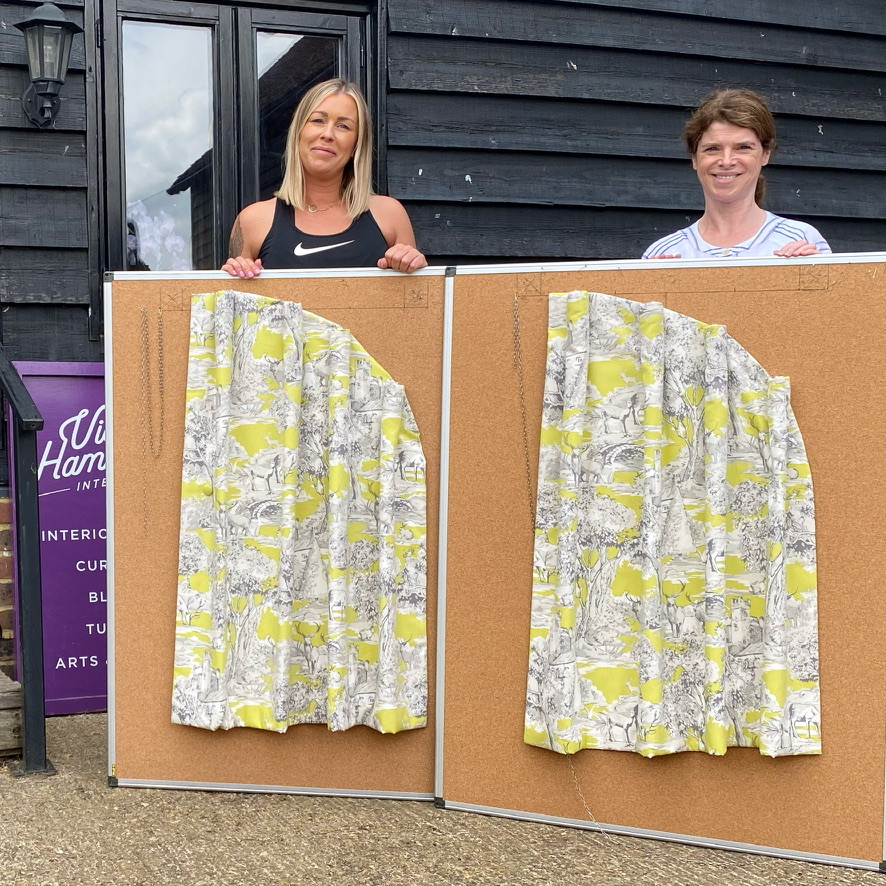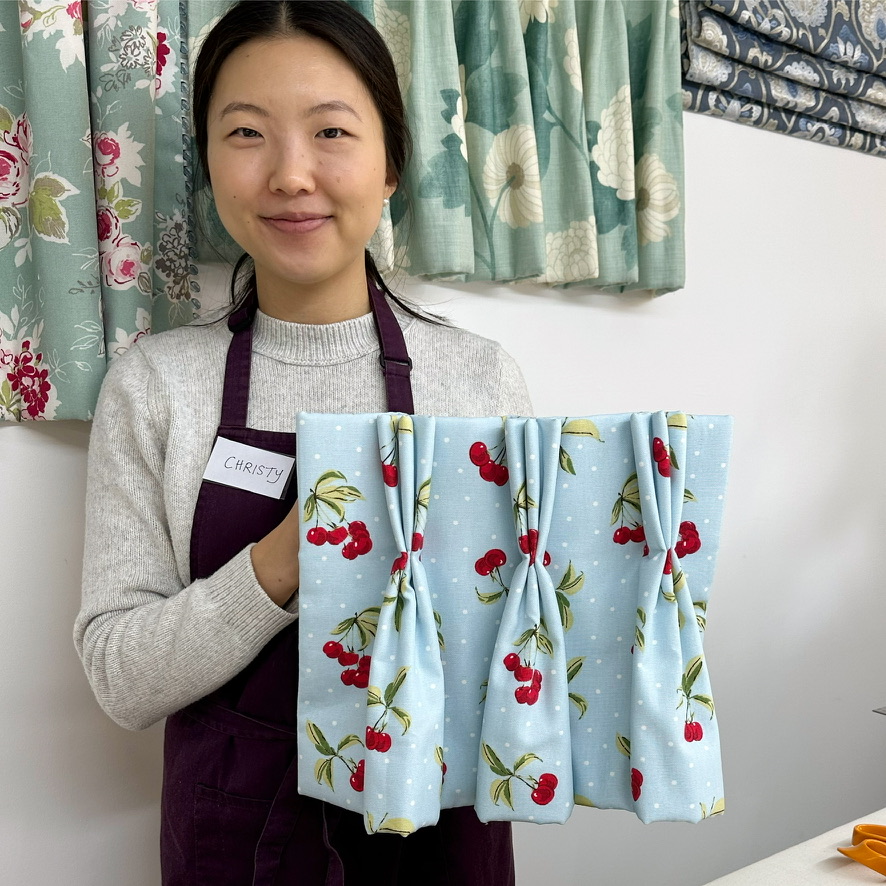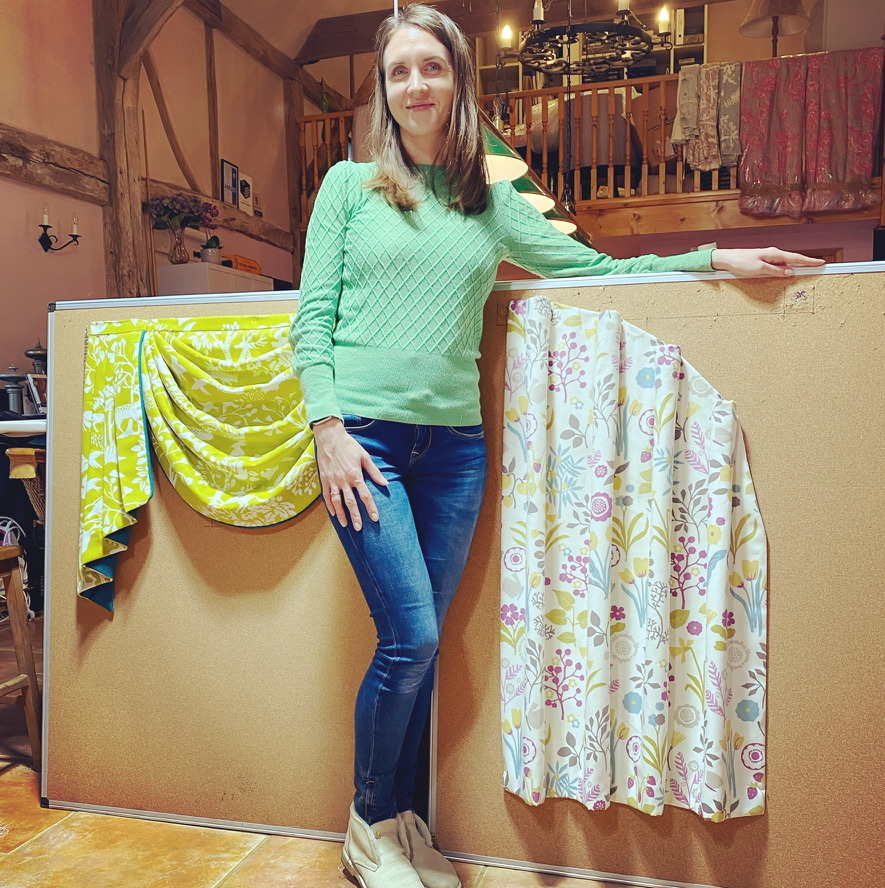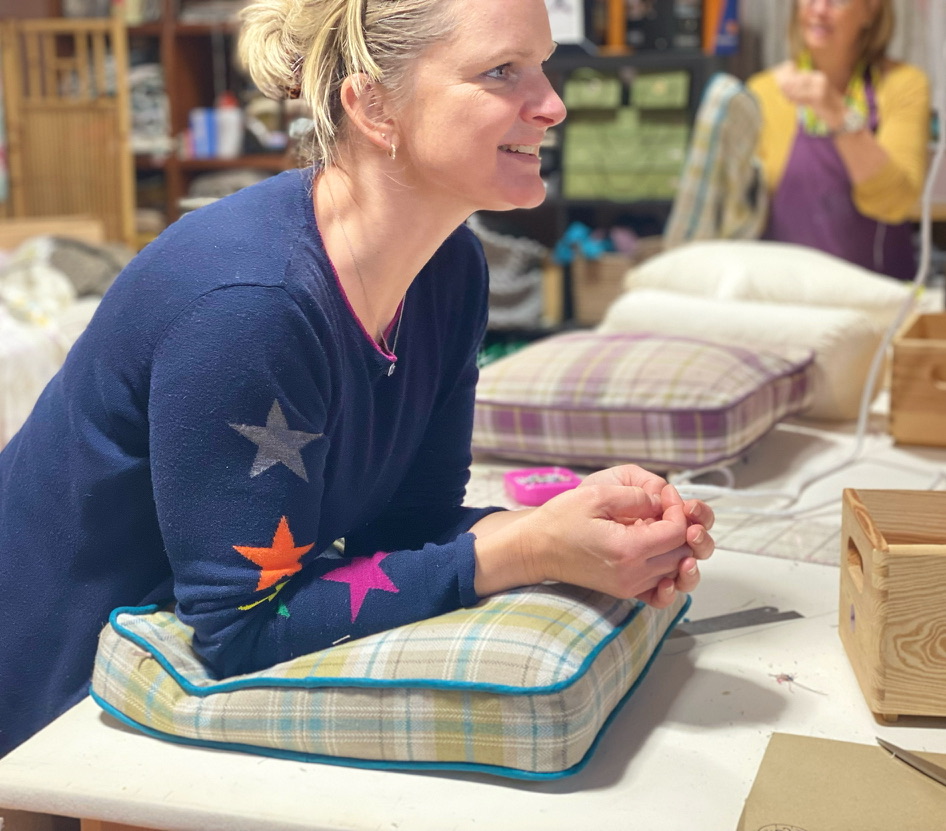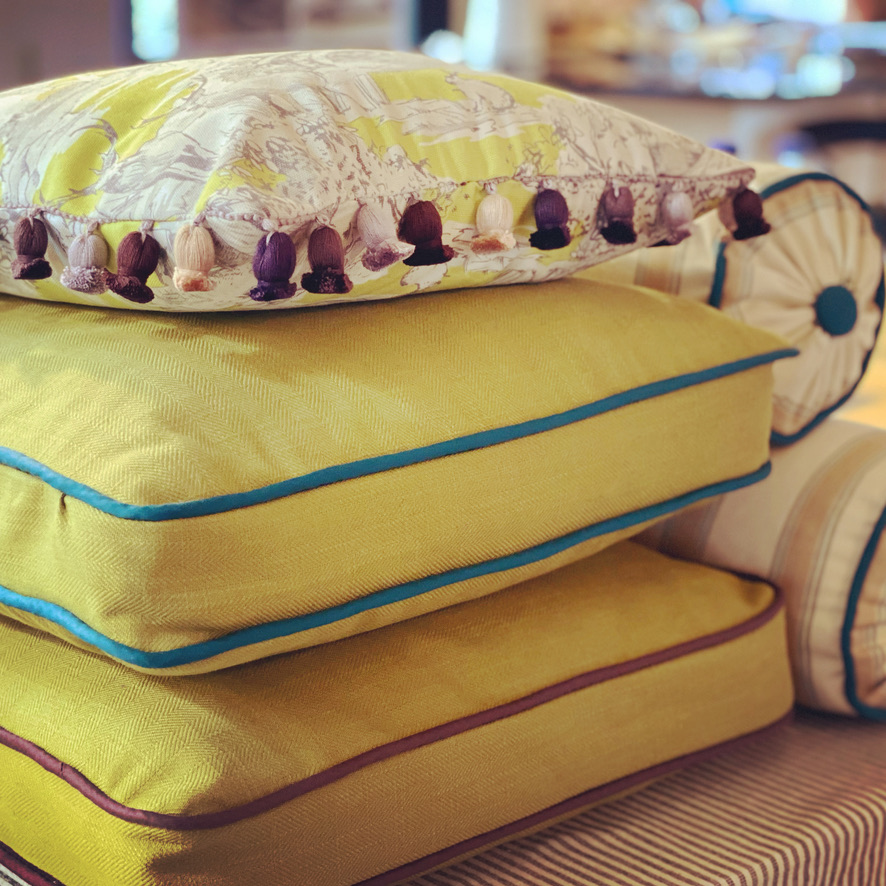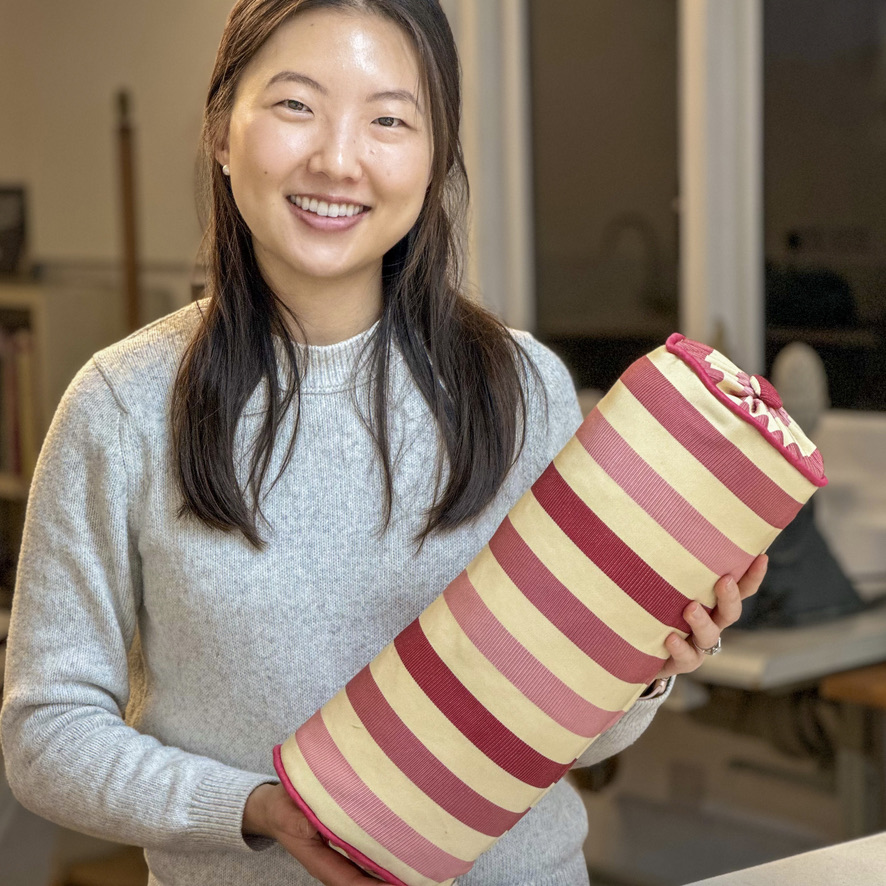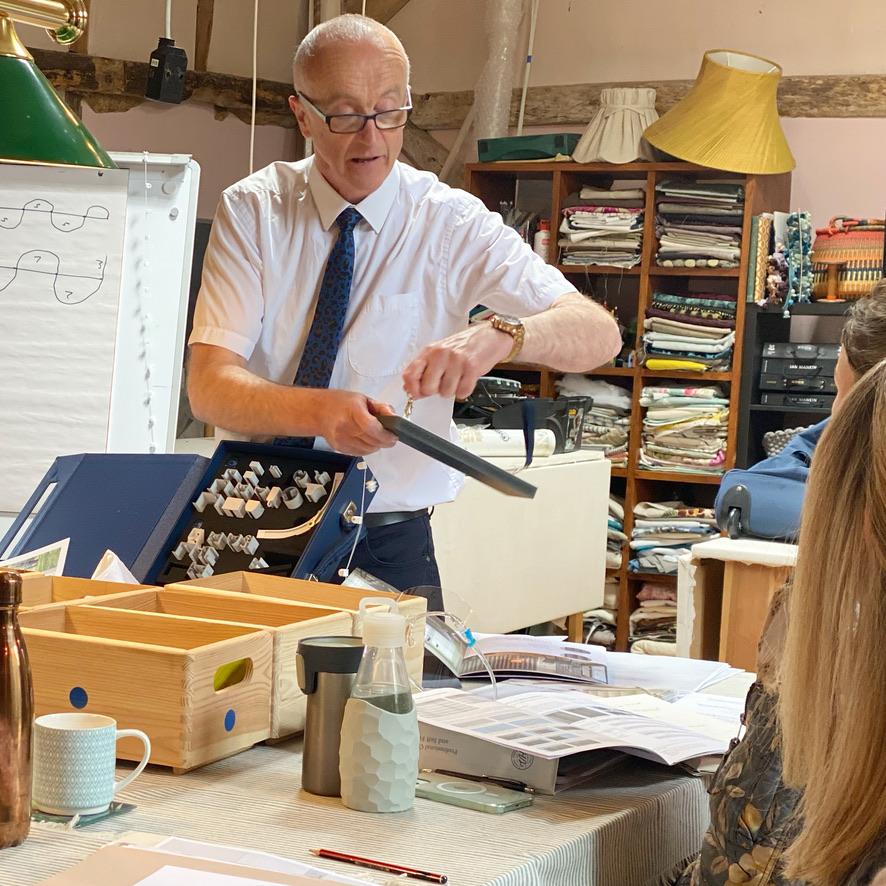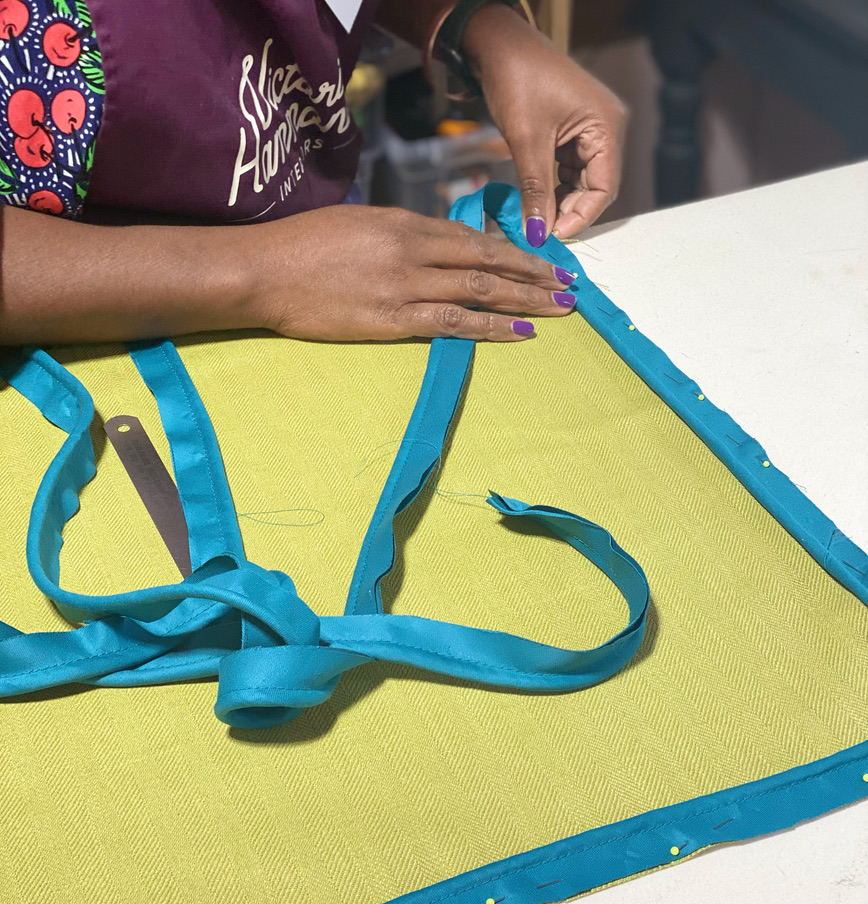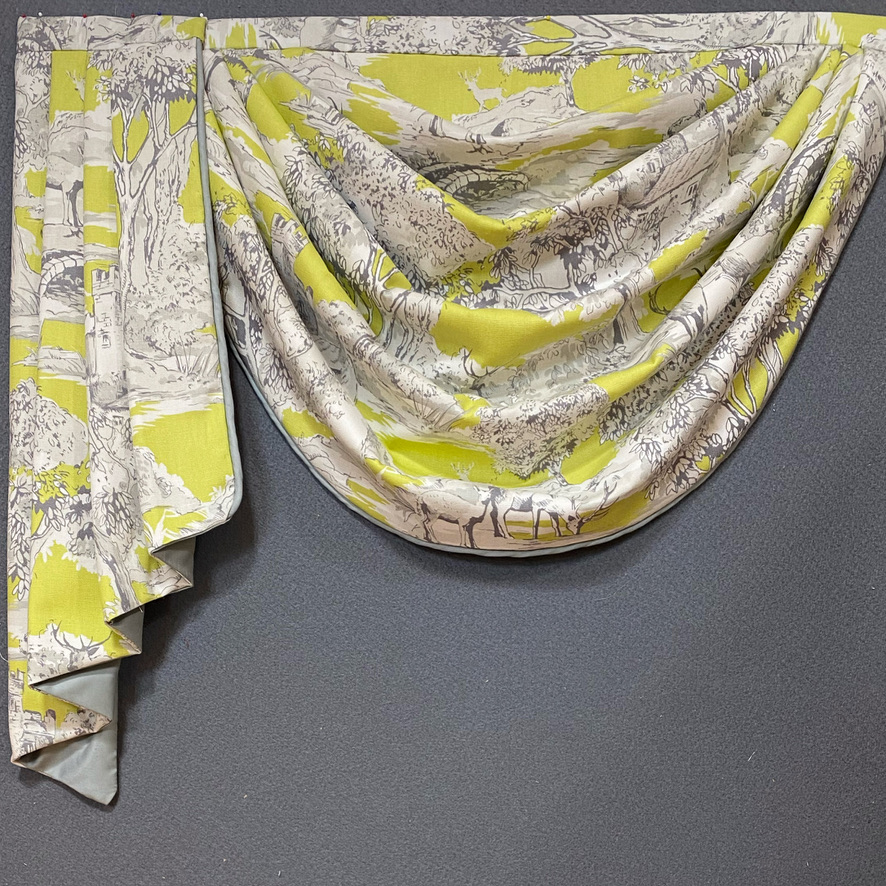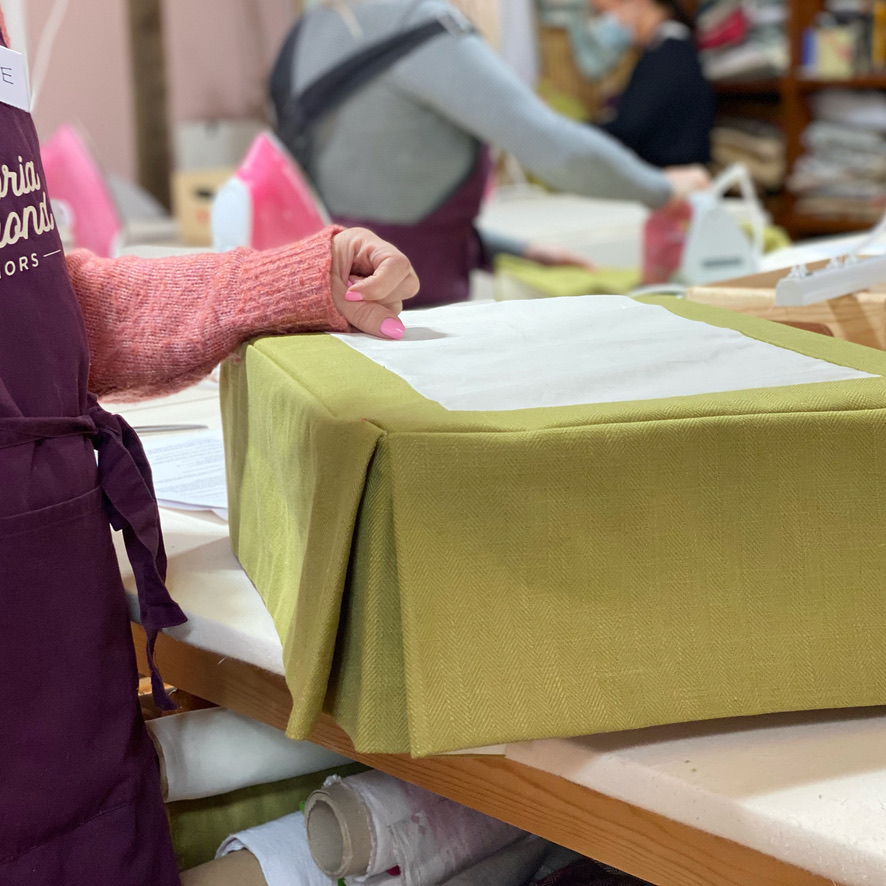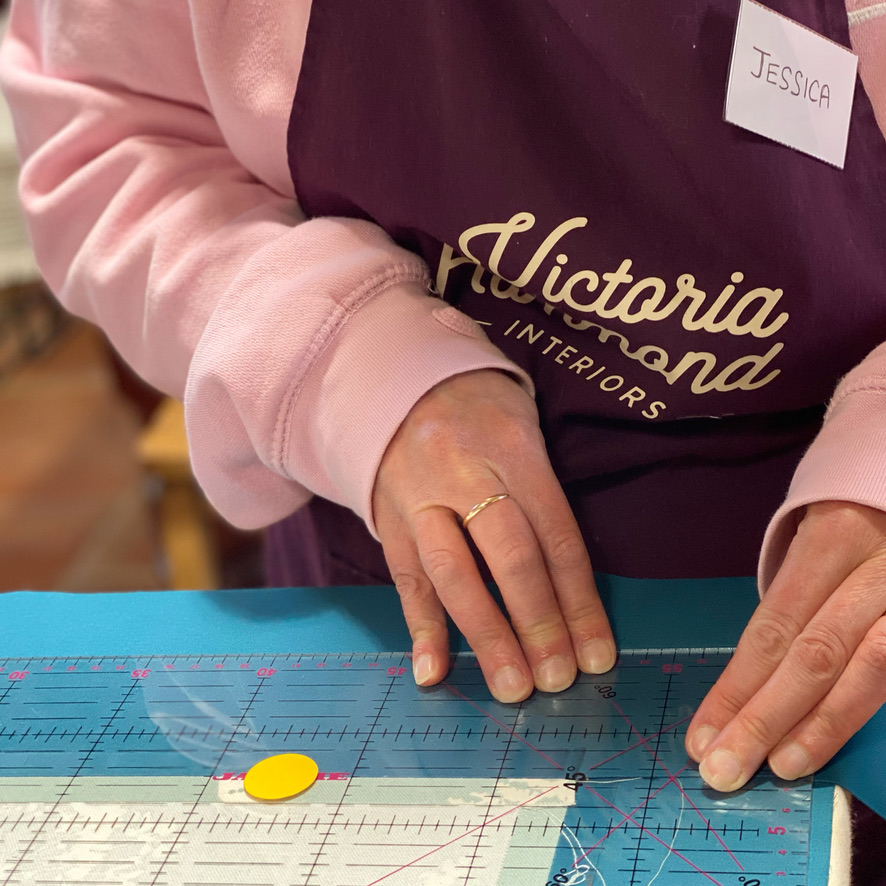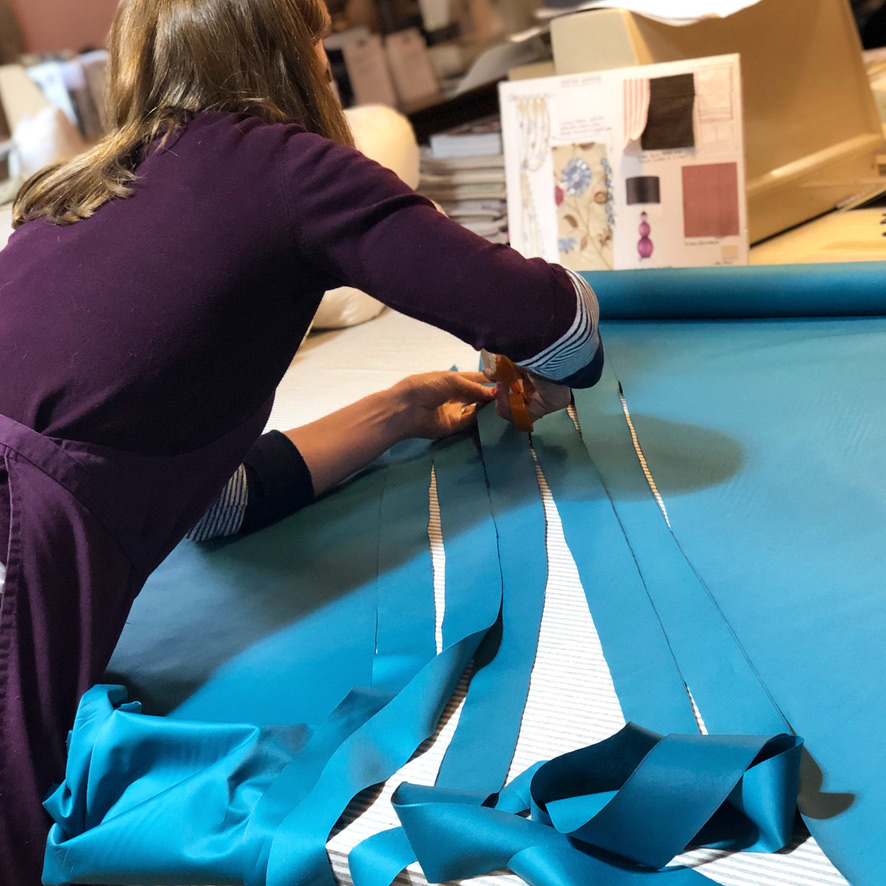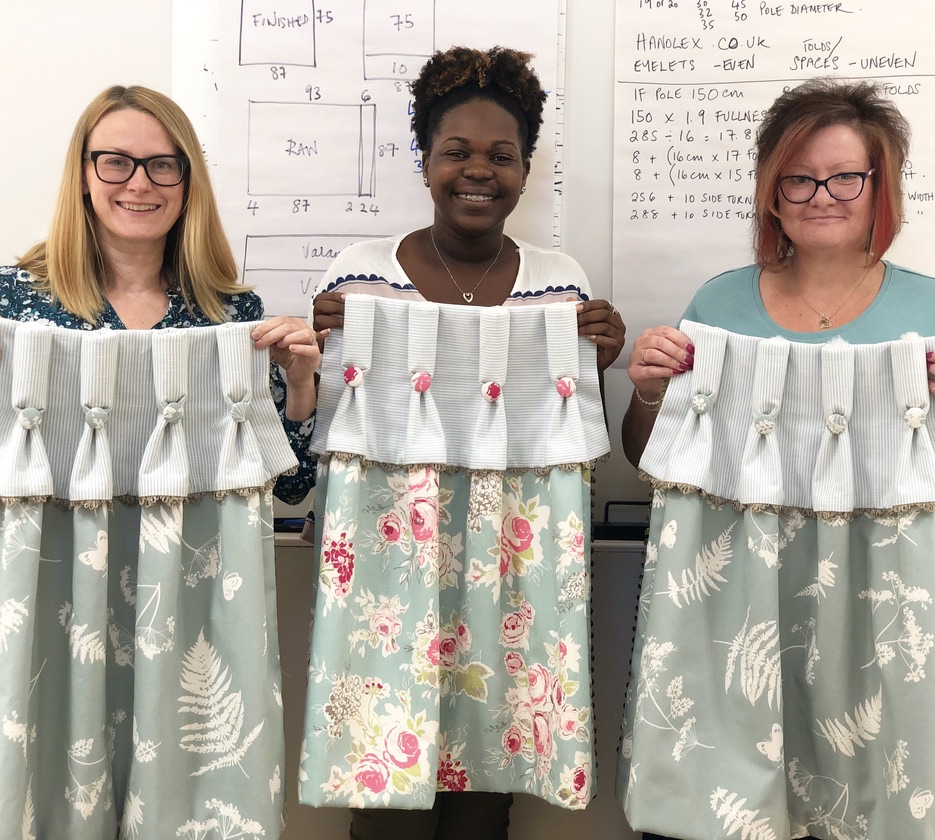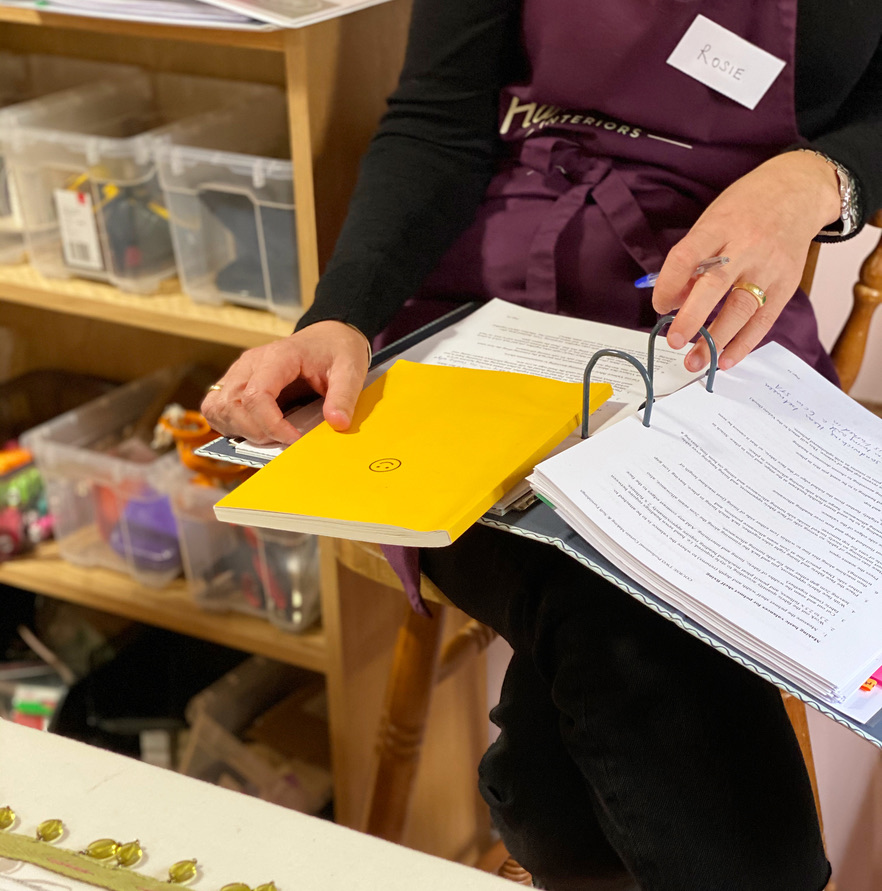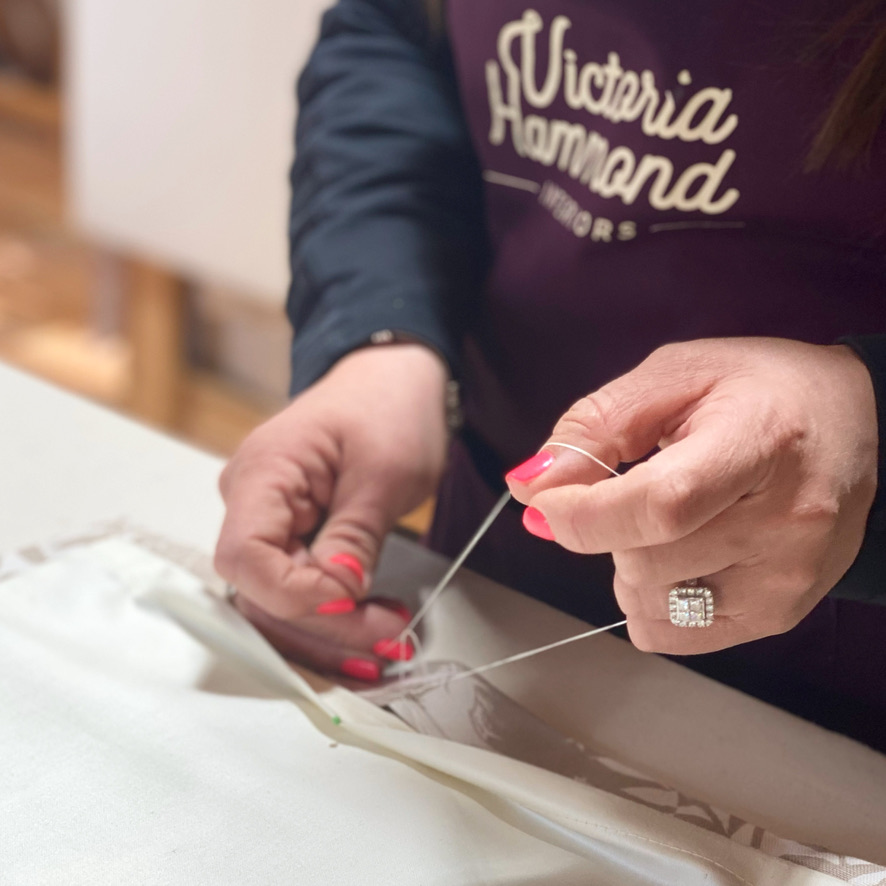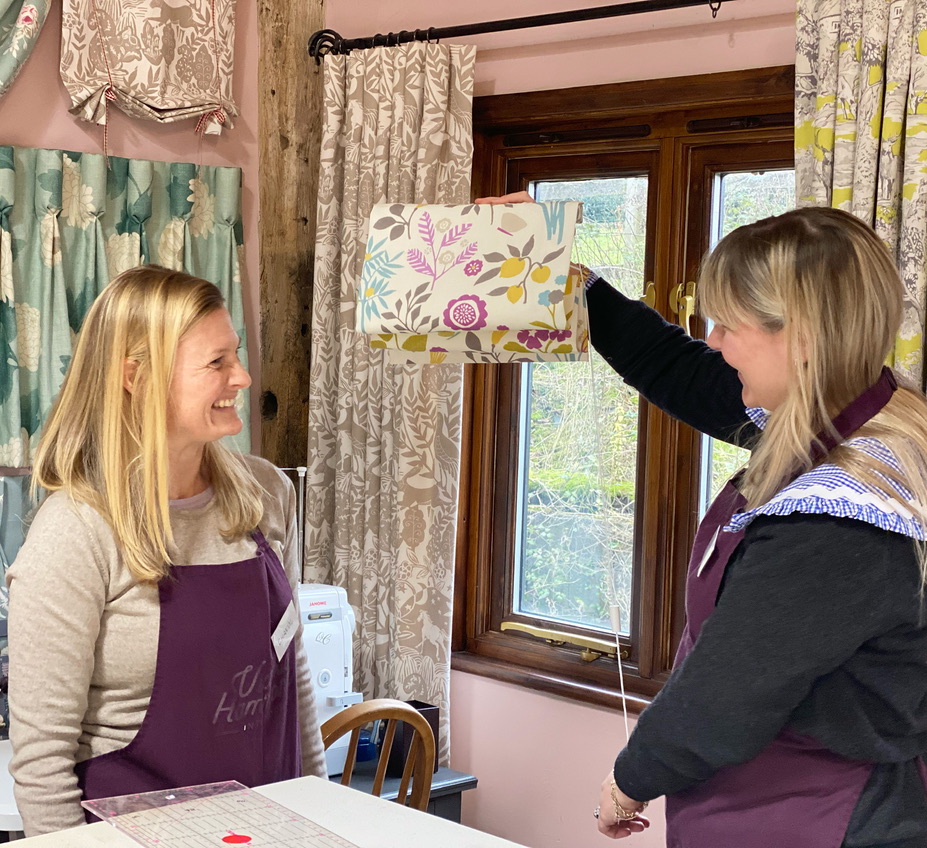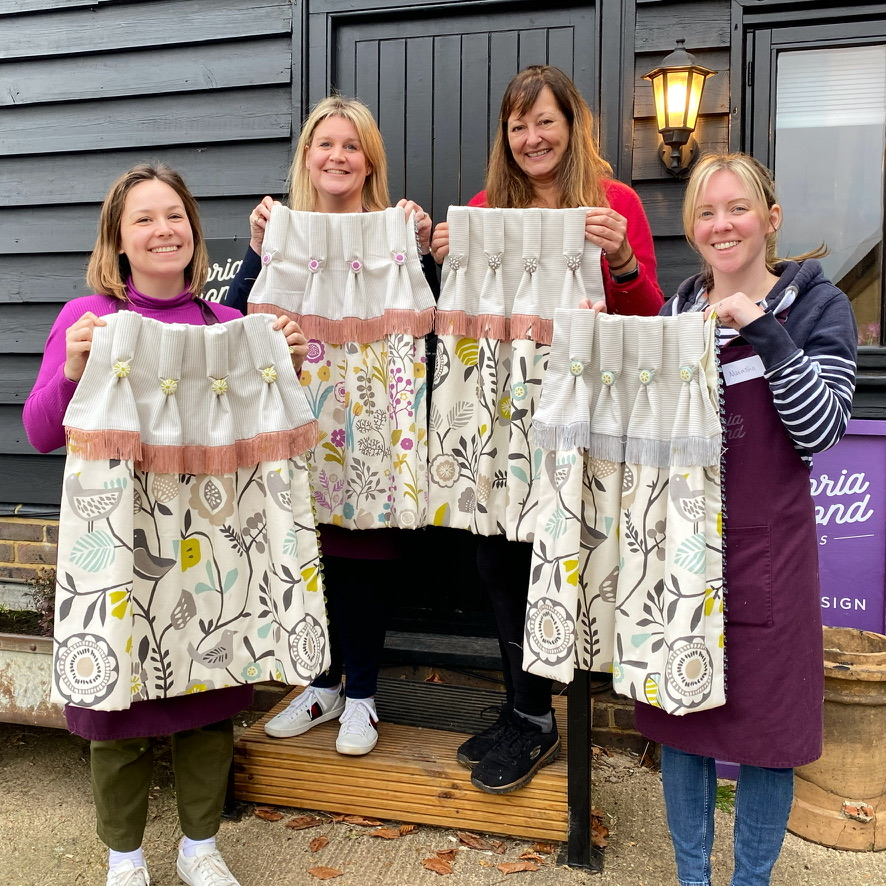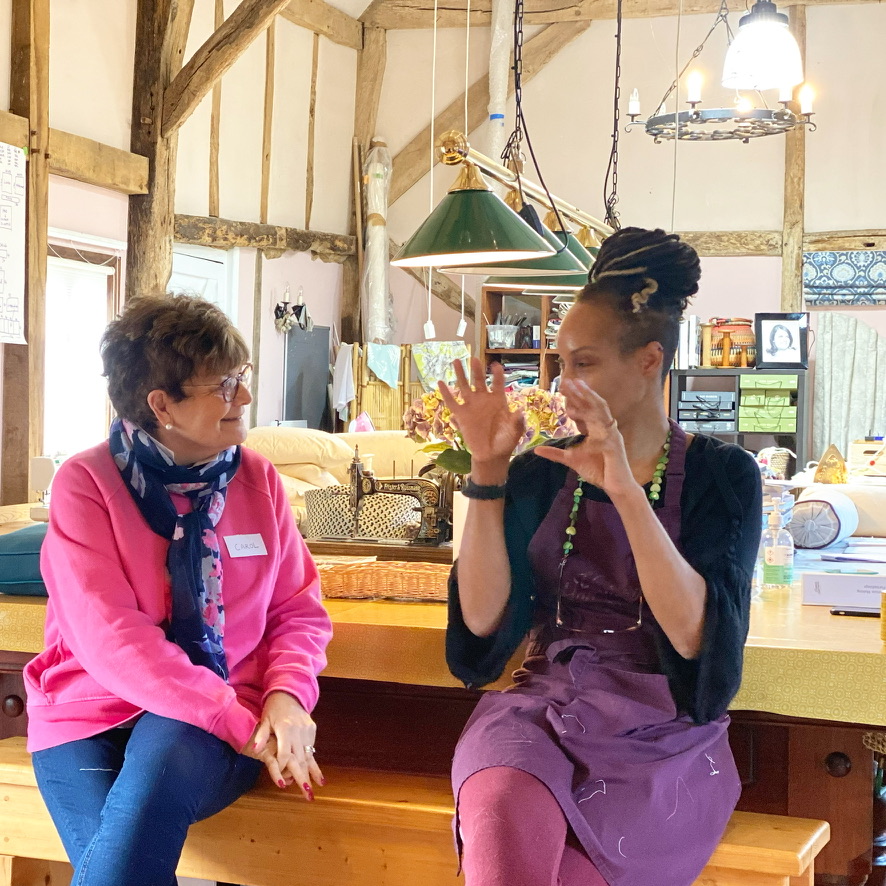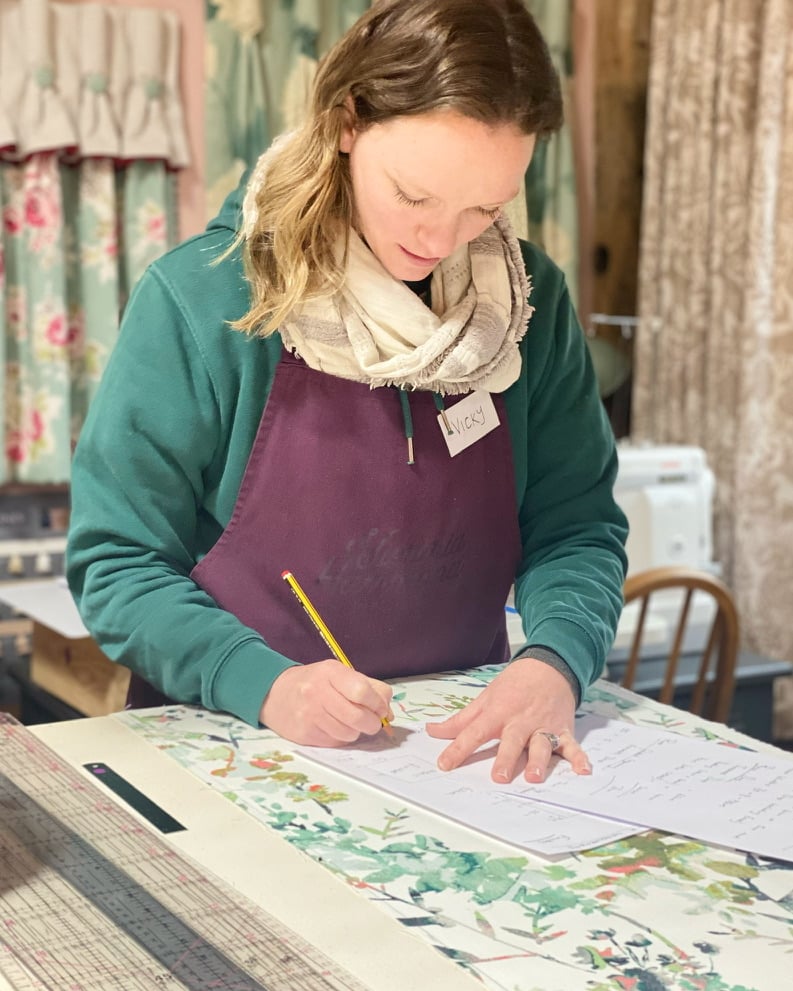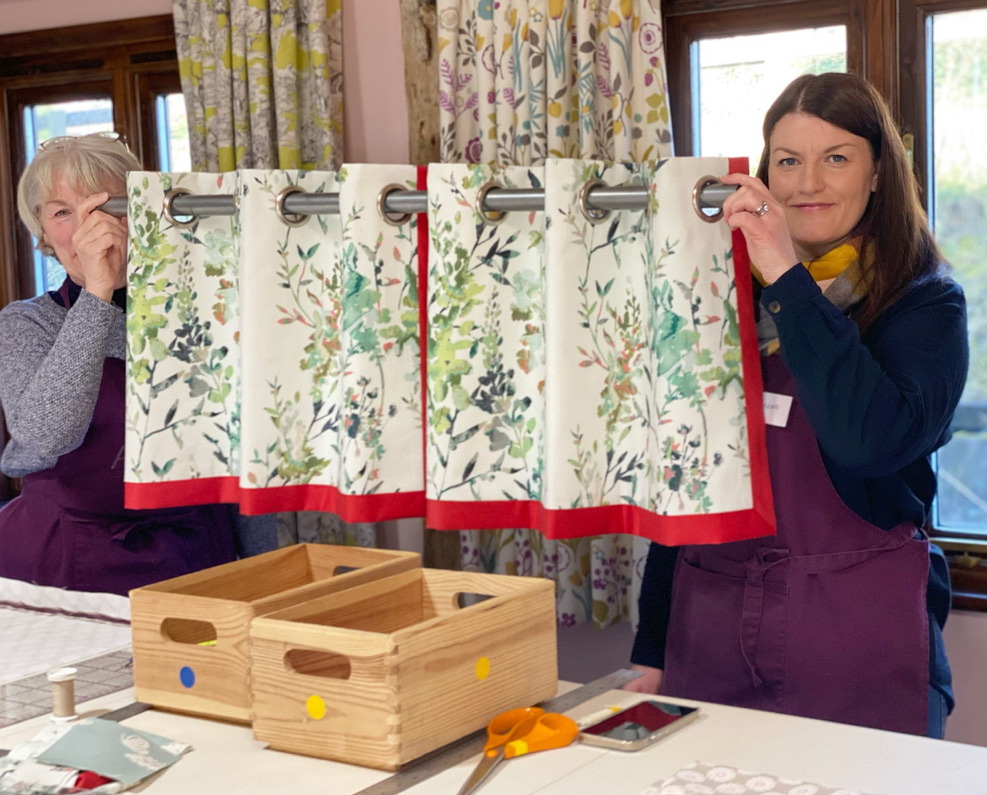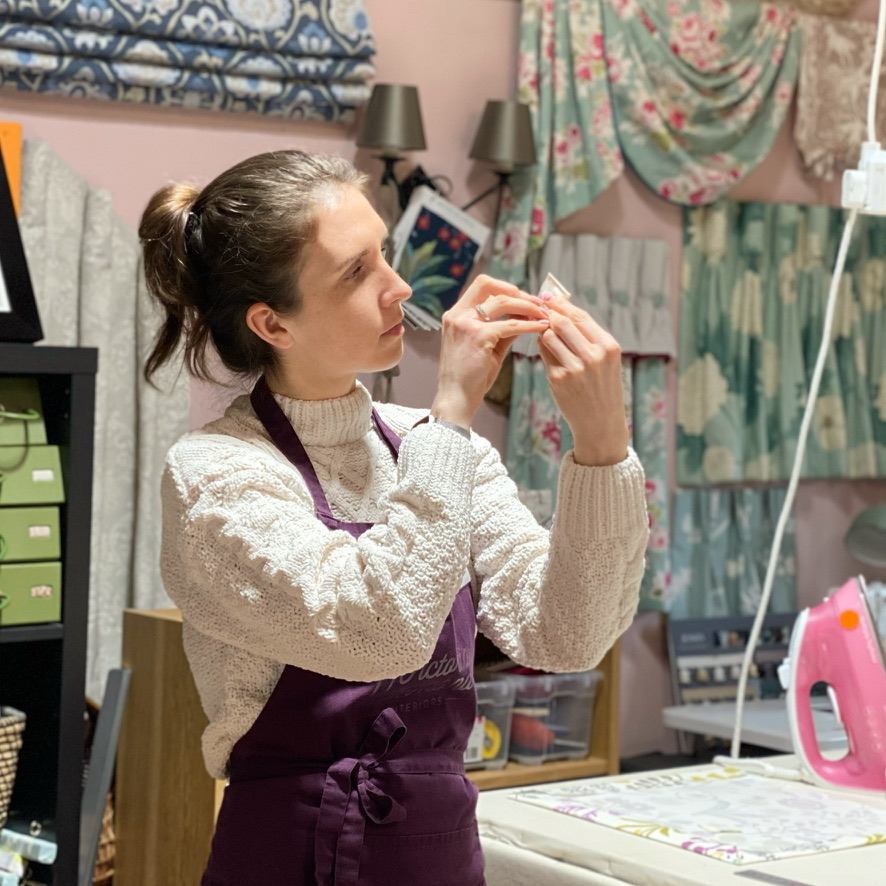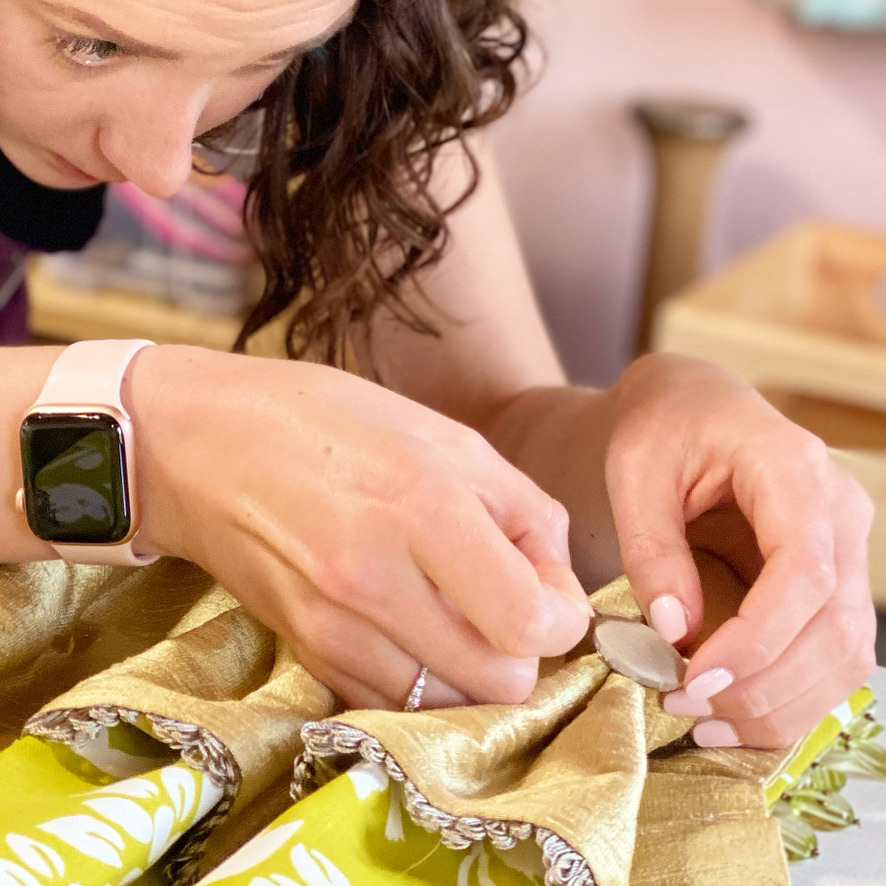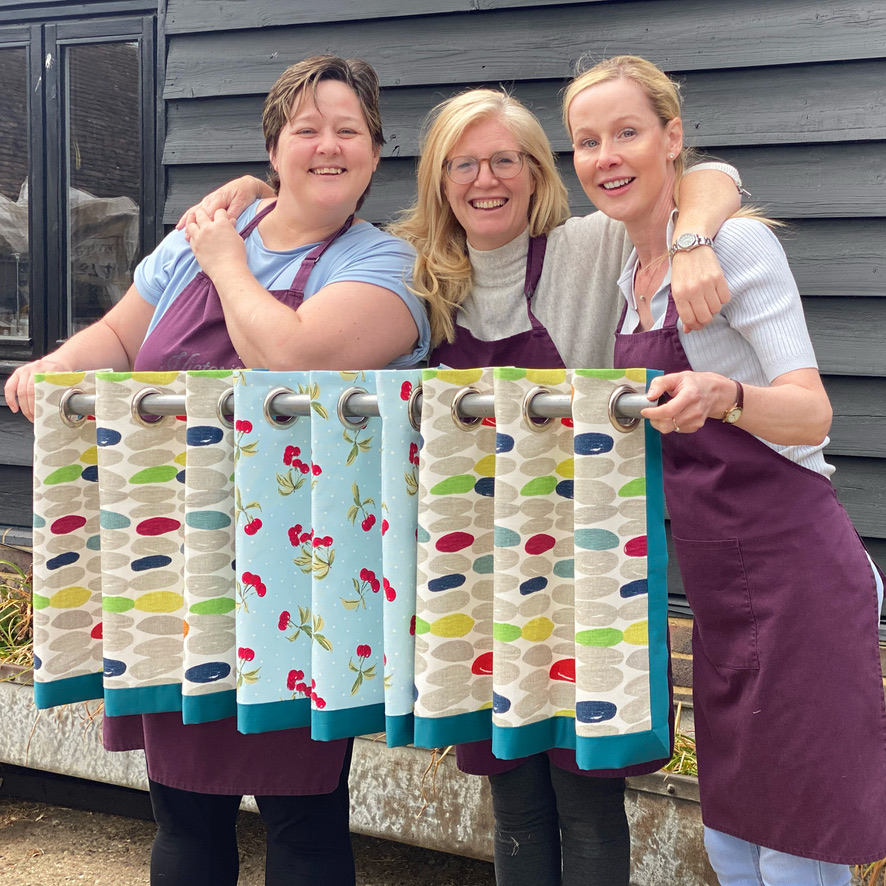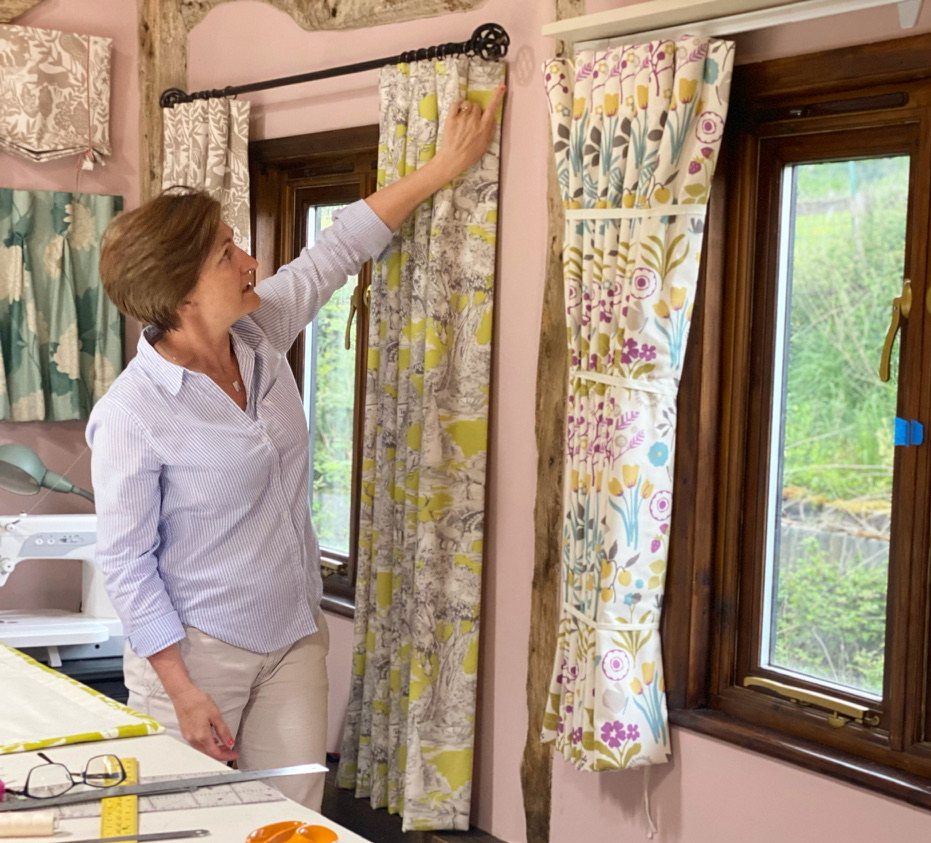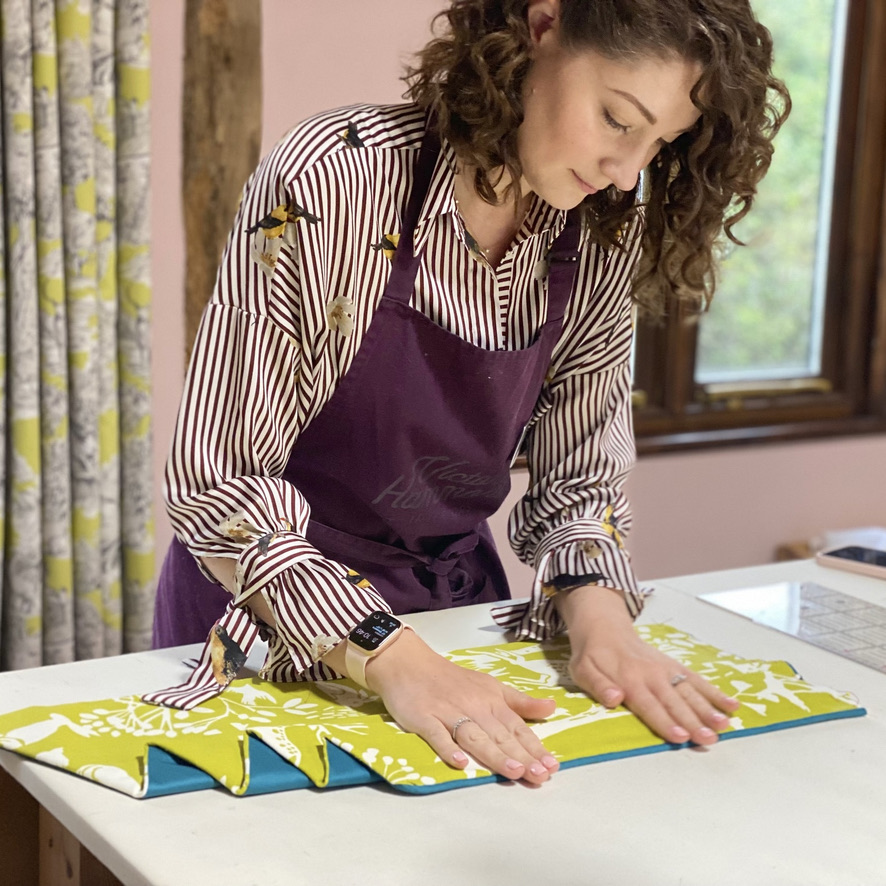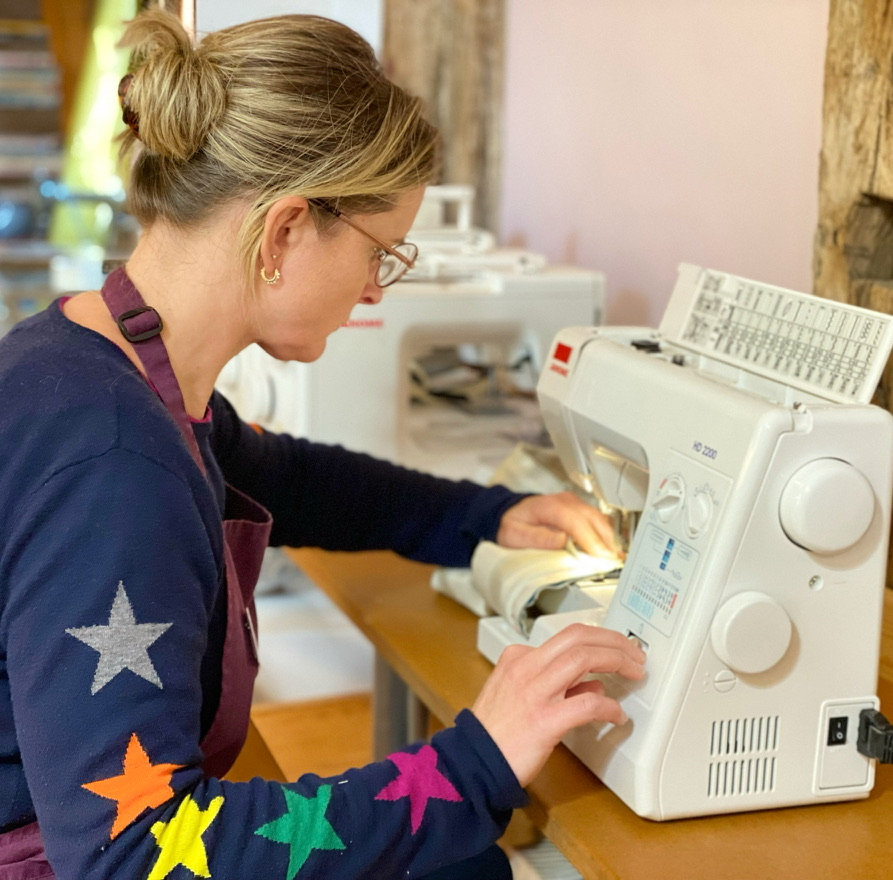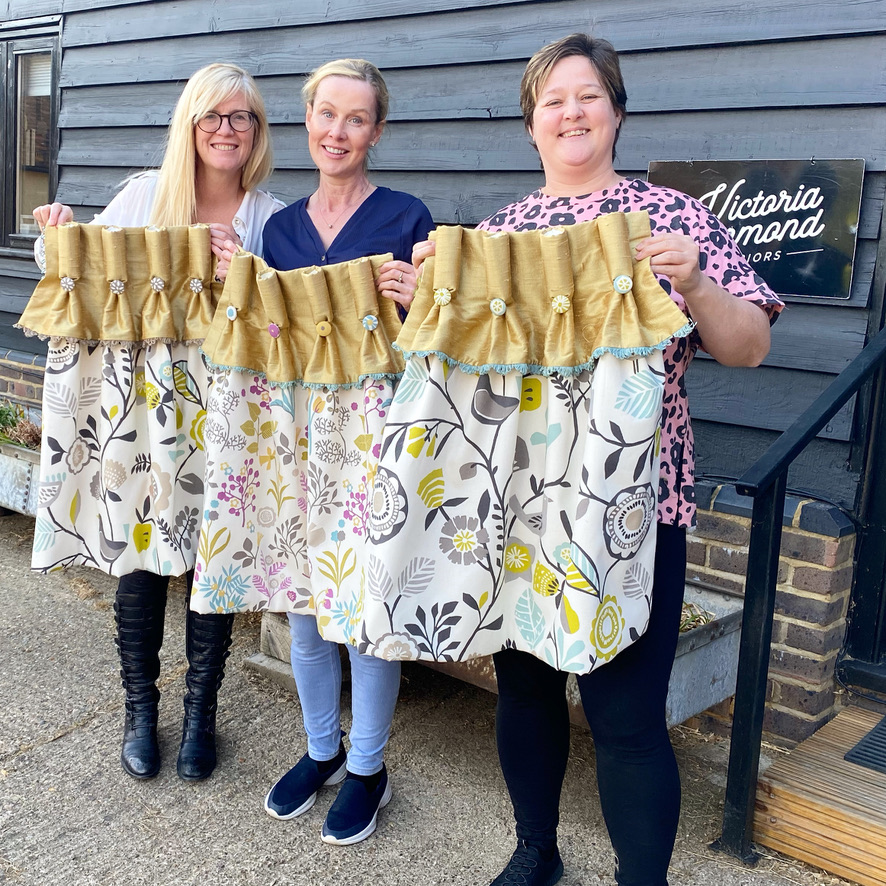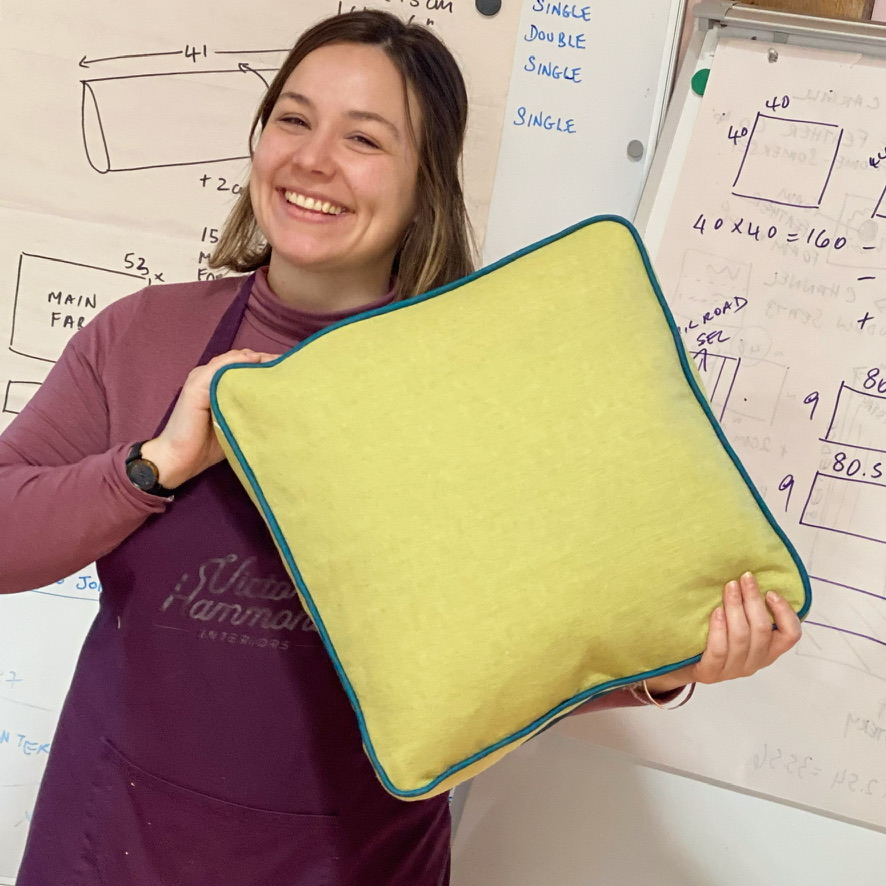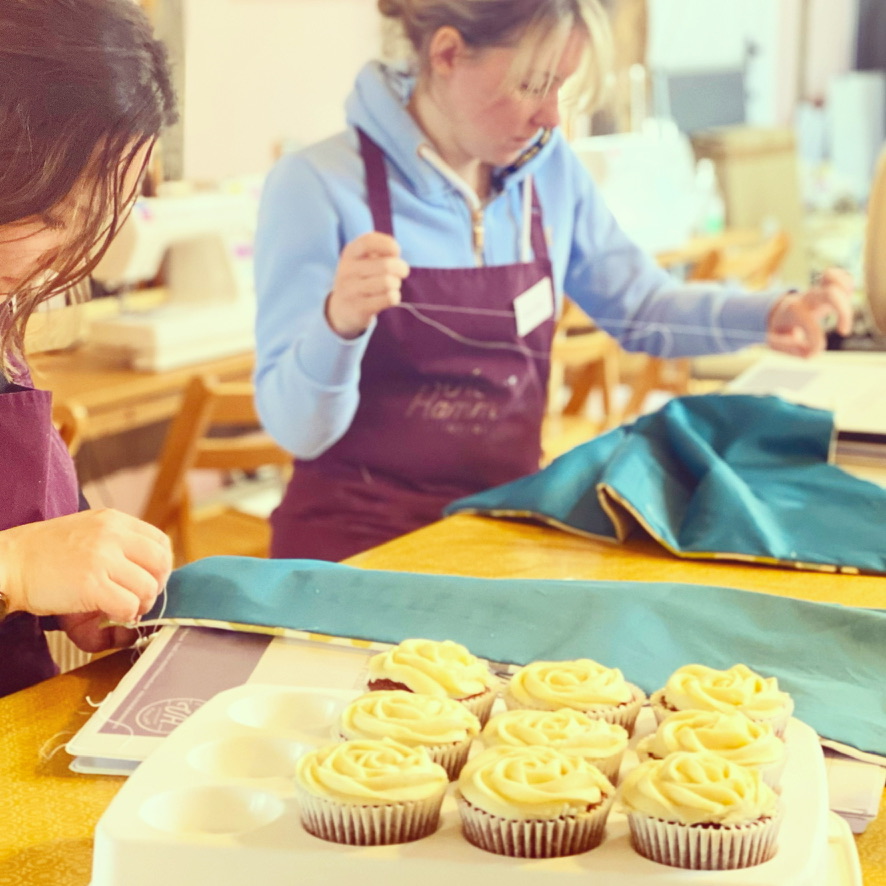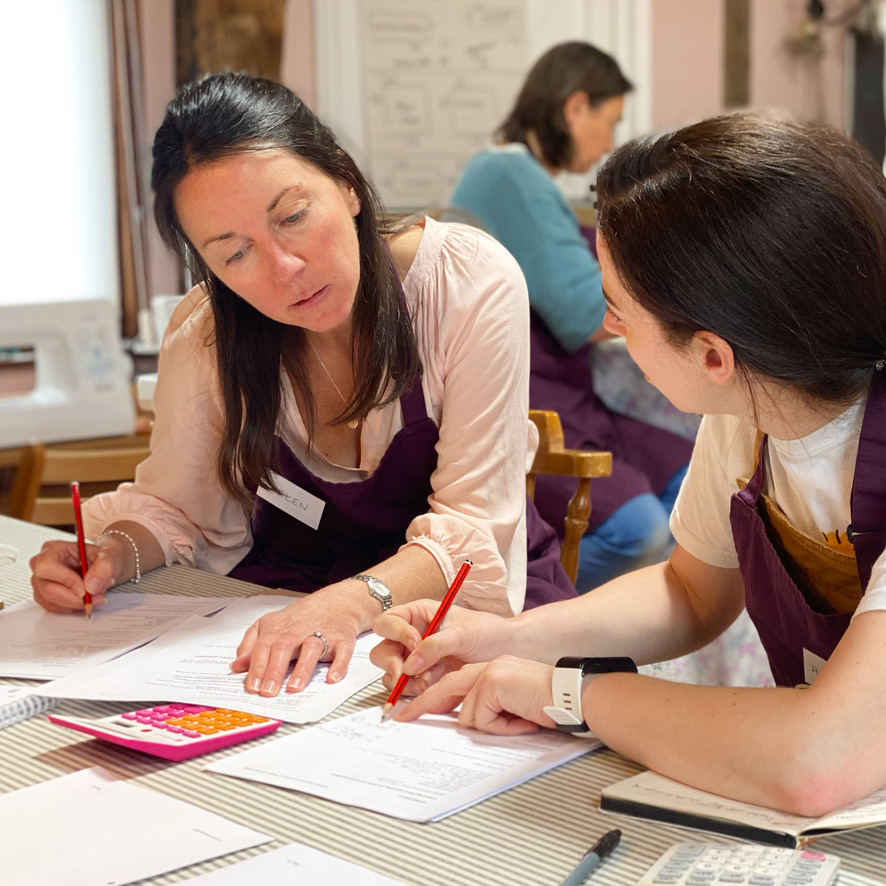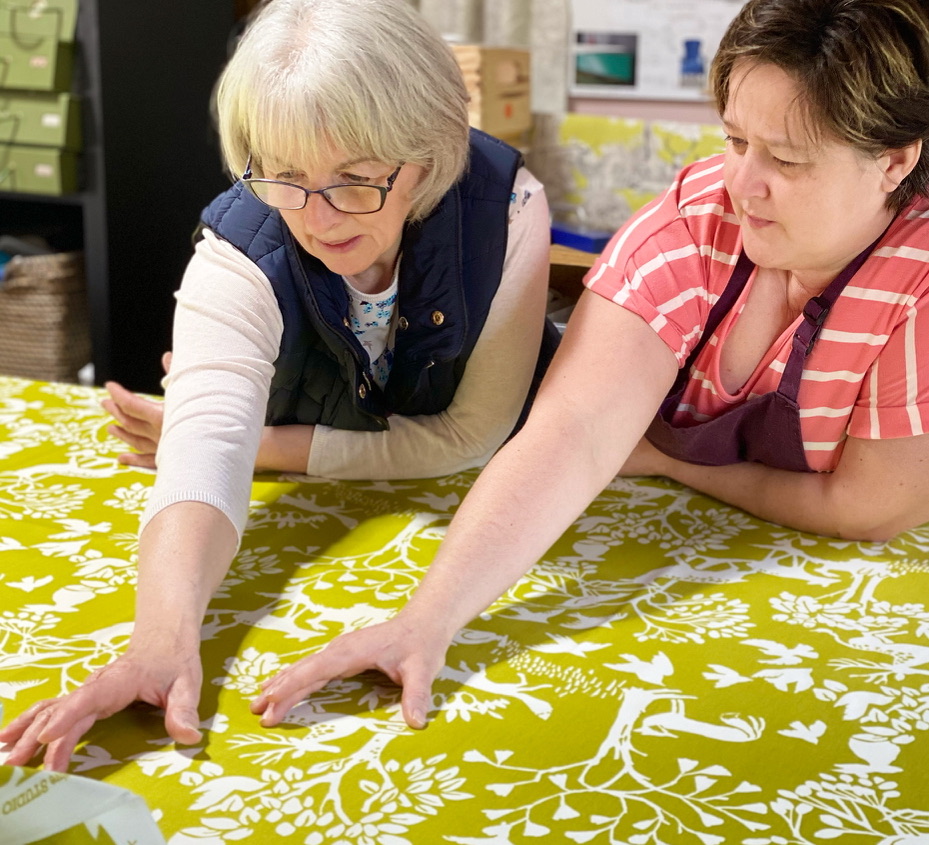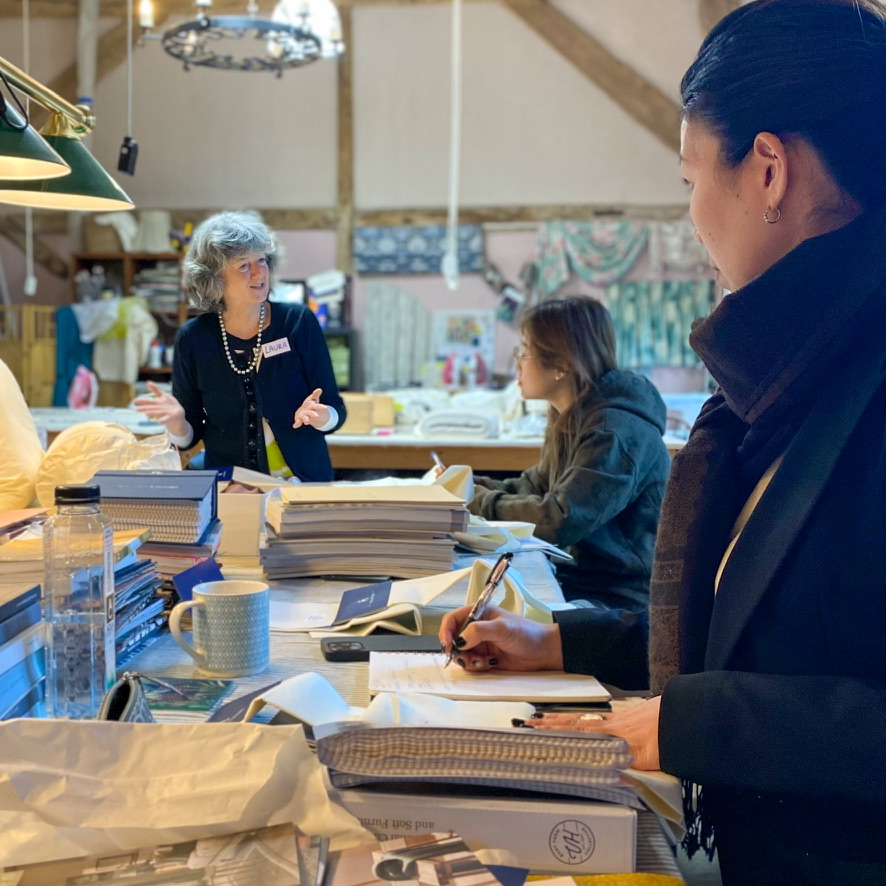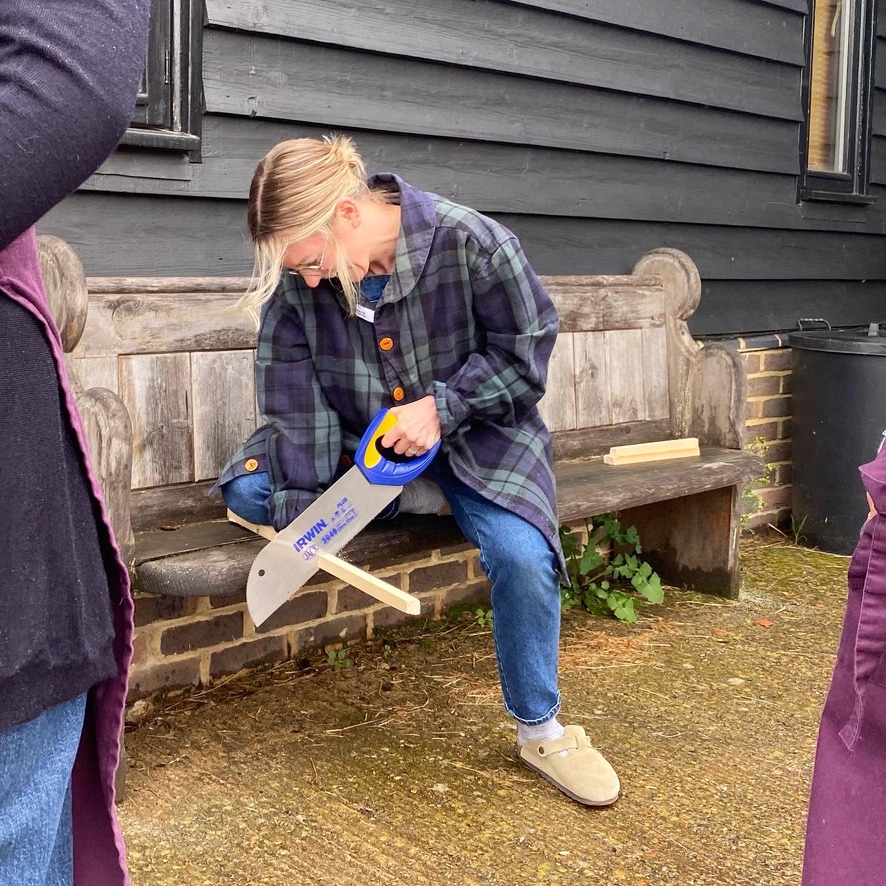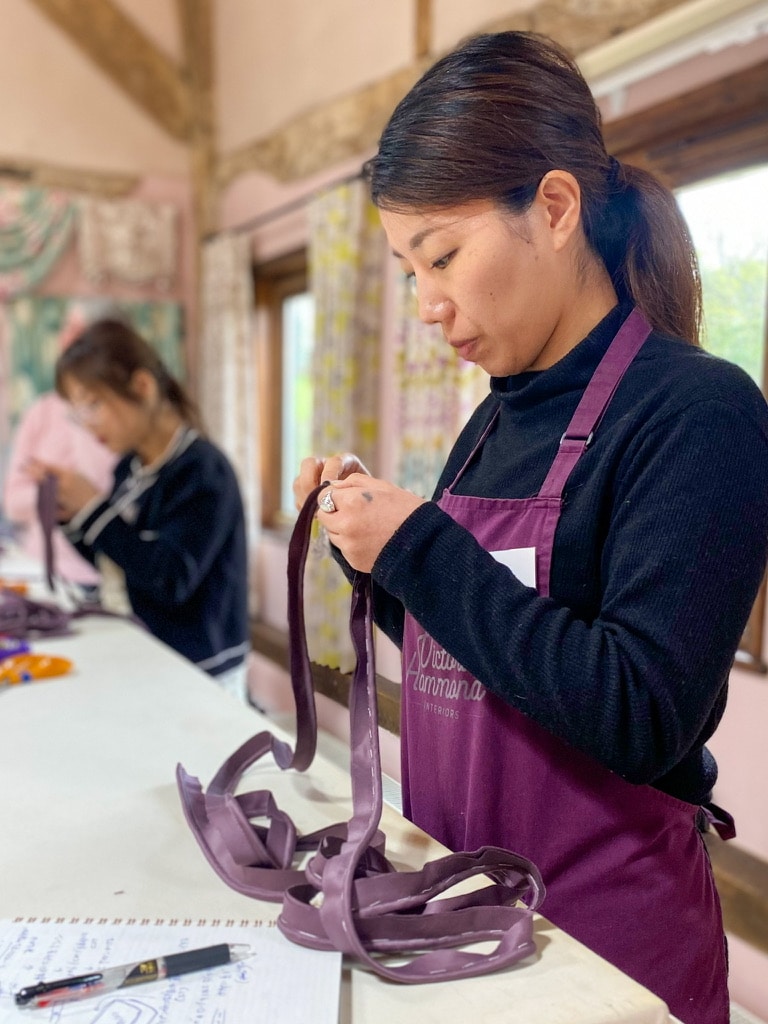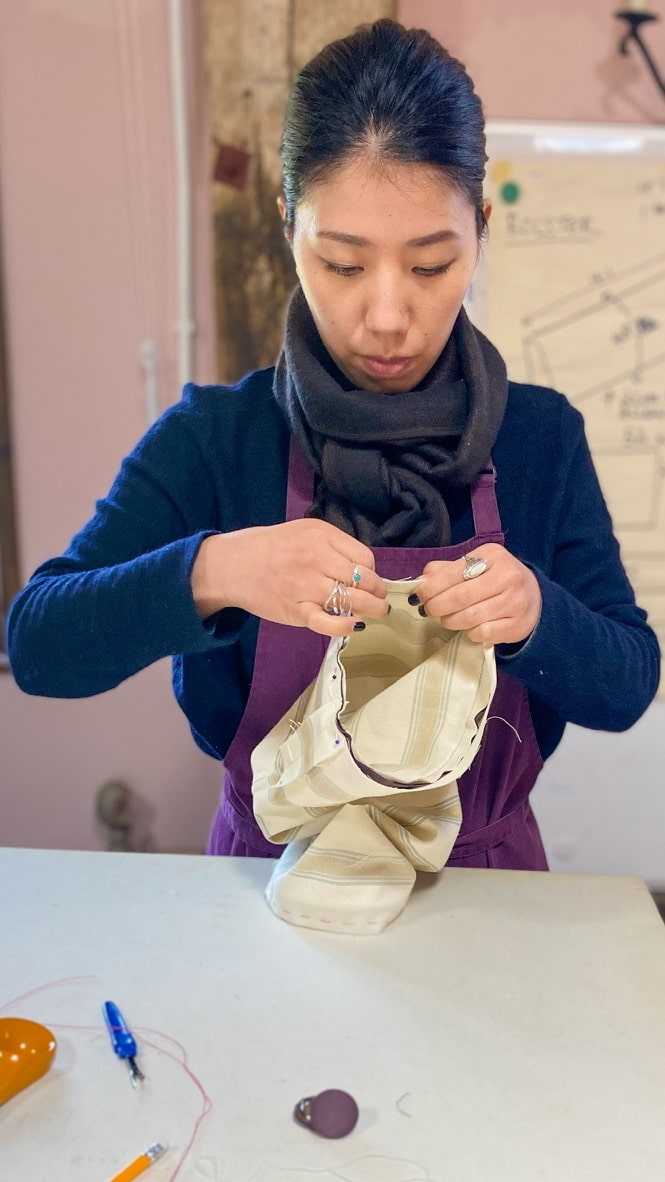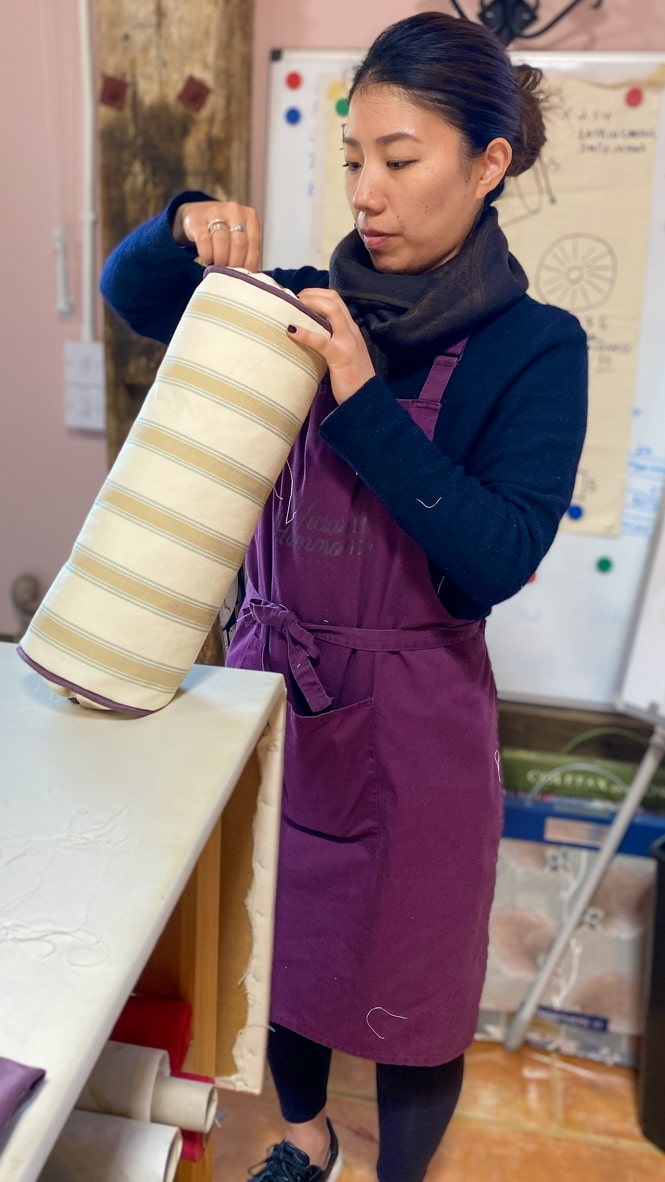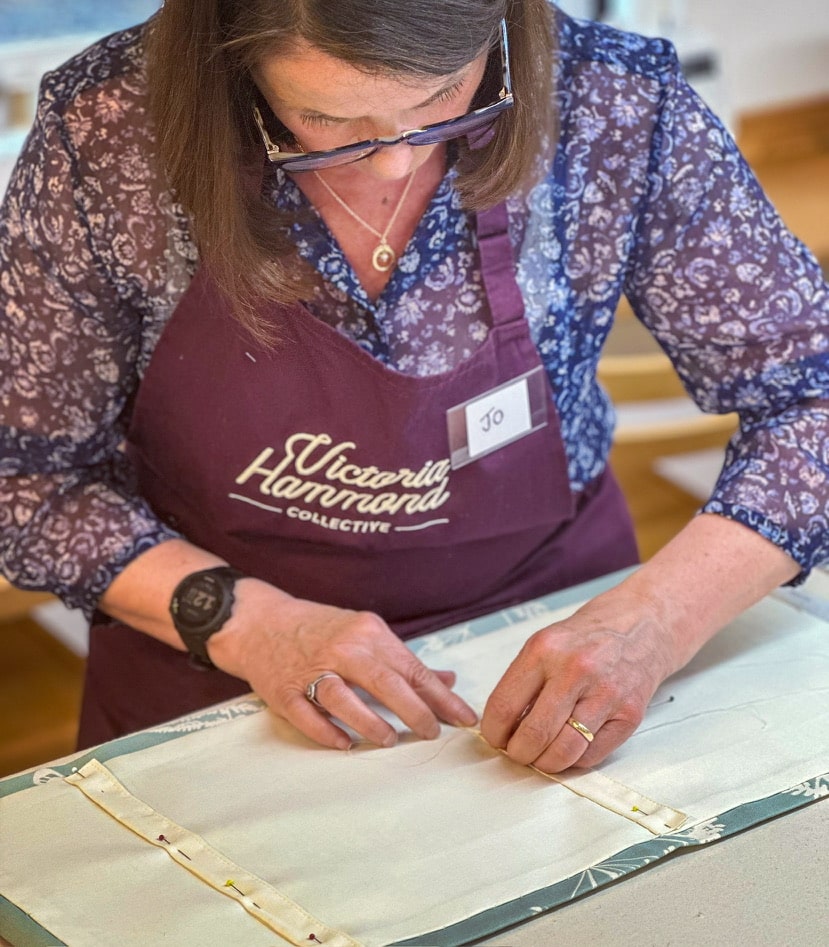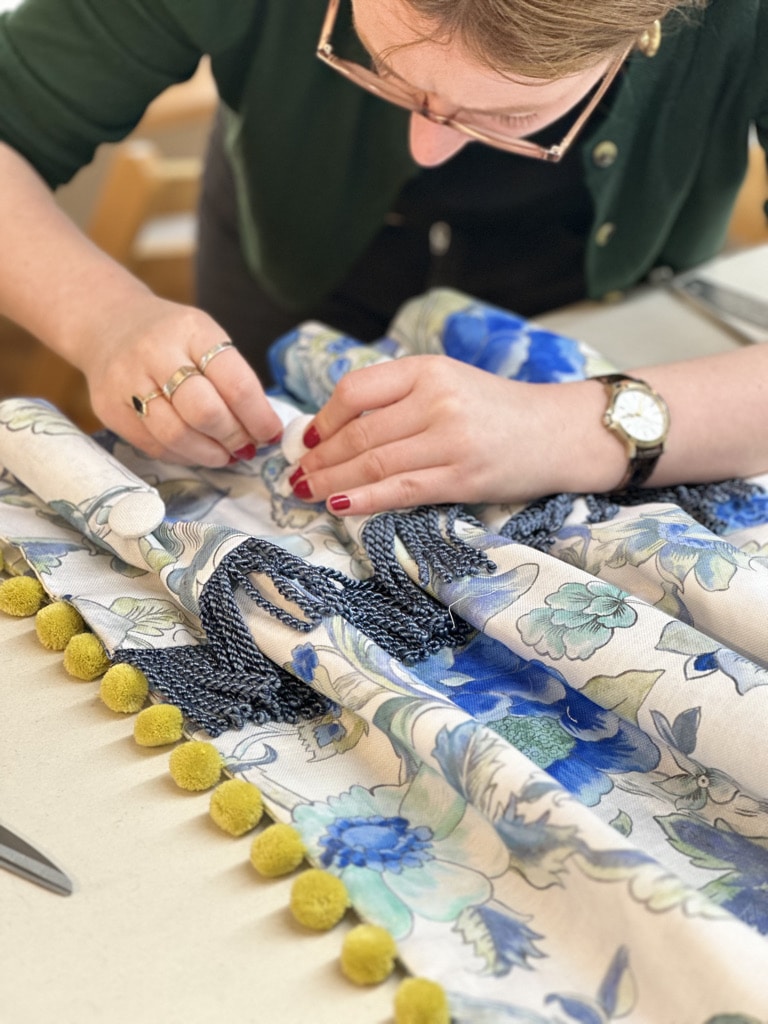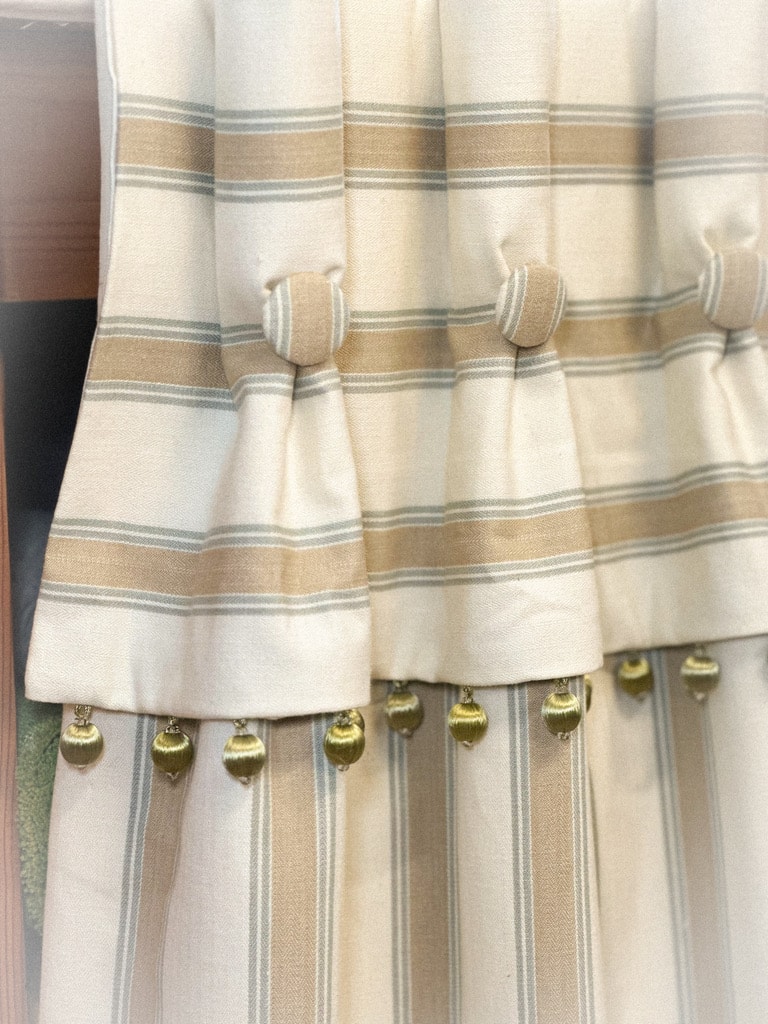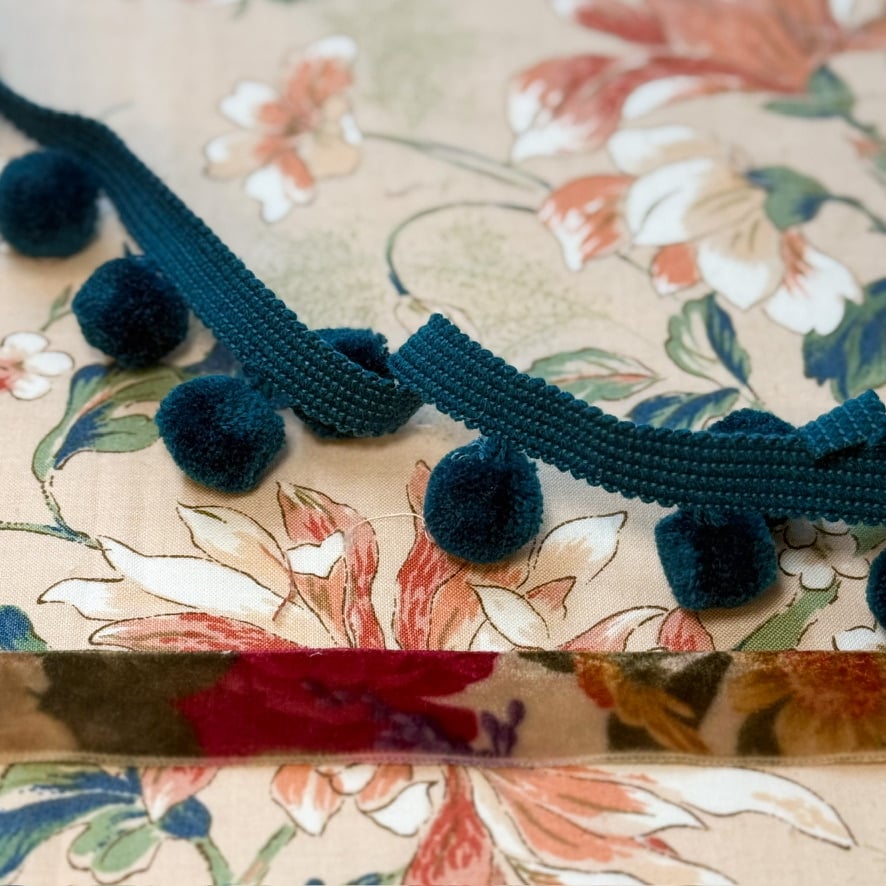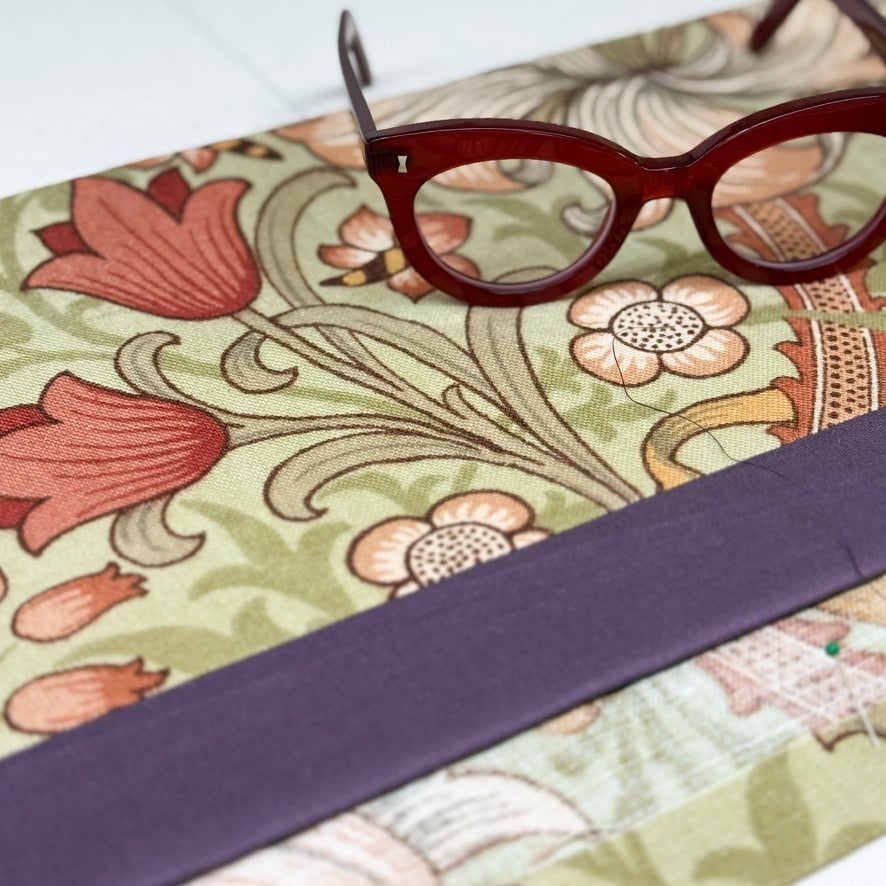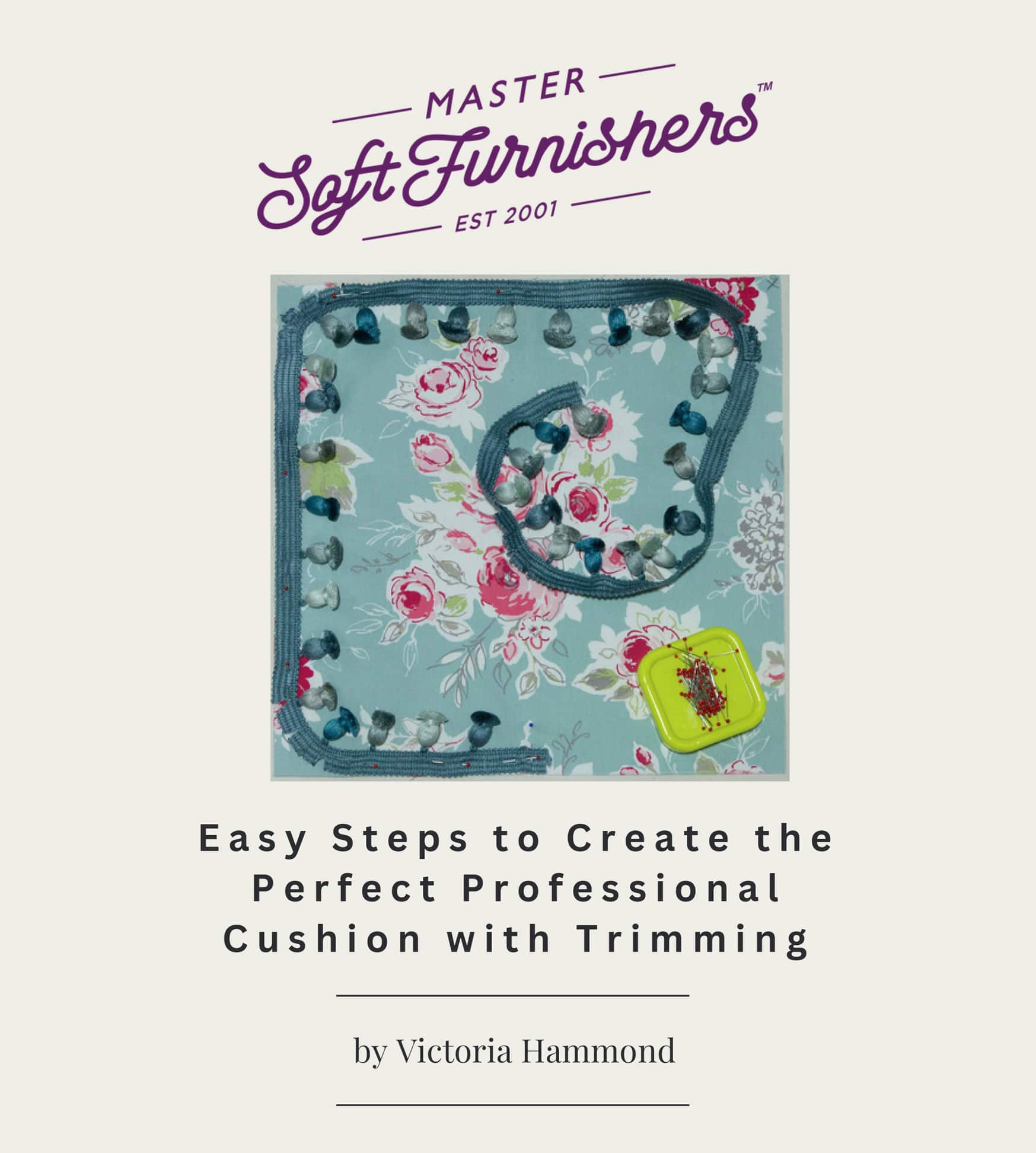ONSITE
DIPLOMA
Professional Curtain
Making & Soft Furnishings
Course Summary
-
Students will learn how to measure and assess various window scenarios, estimate fabric quantity and calculate accurate measurements for make up.
-
Students will make many samples over the 17 days using traditional hand sewn methods and techniques for the professional finish; pencil pleat, French, Goblet & Cartridge pleat, lined and interlined curtains. Upholstered pelmet. Fully operational Roman blinds fitted to chain mechanism, incorporating trimming detail, side returns, standard and cascade folds. Eyelet curtain and integral valance curtain incorporating trimmings, borders & embellishments. The popular Wave sheer (voile) curtain including an onsite seminar by Silent Gliss. Templating and making of swags & tails and an Arch window sample, incorporating Italian Stringing.
- Comprehensive business seminars, including onsite visits from leading industry suppliers, with advice on costing, setting up a business, hardware fitting, motorised systems, and client liaison/presentation.
-
Upon completion students will have mastered the design and making of window treatments and soft furnishings, enabling them to achieve a high-quality professional finish essential for running a successful business.
| Entry Requirement | All levels welcome, including absolute beginners |
| Duration |
17 Days including: Course ONE: 5 days |
| Course Timing | 09:00 to 17:00 |
| Certification | CPD Accredited |
| Course Fee | £2995 £850 Deposit £2145 Balance (£200 discount) |
If you are able to travel to us, we highly recommend training face to face at Master Soft Furnishers Academy, where you will receive individual tuition and guidance in a small class.
£200 discount applicable
if you book the Diploma courses together.
A deposit payment is required to secure your place on each of the courses.
Balance payment is due to be settled at least
14 days prior to each course start date.
Option in ‘Your Account’ to make Part Payments towards the balance.
Balance payments due;
Course ONE £700, Course TWO £700, Course THREE £700, Making of Cushions £245
(£200 discount deducted from the last
course attended).
Course ONE, TWO & THREE are to be attended consecutively, whereas Making of Cushions can be attended at any time. The courses can be attended close together or over a period of time (completion required within an 18 month timeframe).
Attendance dates can be decided at a later time subject to availability (select at booking stage ‘dates to be decided’).
All course fees are inclusive of specialist products and materials, designer fabrics and a comprehensive step-by-step manual. We provide refreshments throughout the day.
Free parking onsite.
On completion of Course ONE, TWO, THREE & Making of Cushions students will be awarded an Accredited Certificate ‘Diploma in Professional Curtain Making & Soft Furnishings‘.
Master Soft Furnishers are award- winning Interior Design and Soft Furnishing Specialists, established 2001. Our Academy offers accredited training courses face to face and online. We are registered with UKRLP as a Learning Provider and also an approved member of other reputable organisations, including the Association of Master Upholsterers & Soft Furnishers.
Print Programme
COURSE PROGRAMMES
ONSITE Course ONE – Professional Curtain Making & Soft Furnishings
Through discussion, demonstration and hands-on sample making, this course equips students with the skills and confidence to handcraft professional window treatments. Designed for both absolute beginners and those looking to refine their existing abilities, no prior experience with hand sewing or sewing machines is required. Additionally, the course provides valuable insights into setting up and managing a successful curtain making and soft furnishings business.
Day One
Preparation & Pencil Pleat Curtain
- Design presentation and discussion about curtain styles, decorative hardware, pelmets, and blinds, covering current trends in the Interior Design world.
- Students will practice how to seam lining, interlining, plain and patterned fabric. And make samples of each.
- Students will make a lined sample curtain with pencil pleat heading, which will ensure that you will thoroughly learn and practice traditional hand stitching and curtain making methods.
Day Two
Measuring & Calculations
- Students will learn how to assess windows and plan and design a window treatment, including accurate measuring, bay windows, suitable curtain hardware, and estimation of fabric quantities for plain and patterned fabric.
- Comprehensive discussion on how to calculate accurate measurements for curtain hand headings; Triple (French), Goblet, Cartridge & Double pleats.
- Students will learn how to measure windows, reviewing various scenarios, followed by curtain calculation exercises.
Day Three
French/Triple pleat interlined curtain
- Students will make an interlined sample curtain incorporating the hand heading Triple (French) pleats.
- Demonstration on how to make other hand headings; Goblet, Cartridge & Double pleats.
Day Four
Business & Hardware Fitting Seminar and Upholstered Pelmets
- Comprehensive session on setting up and running a successful curtain making business, including advice on suppliers, costing, client liaison and presentation skills.
- Onsite seminar provided by leading industry supplier, Evans Textiles, with focus on the Roman blind mechanism and motorised systems.
- Professional fitting seminar; students will learn how to specify and fit curtain and blind hardware including awkward window shapes (poles, tracks, blinds, and pelmet shelves).
- Discussion on designing pelmets, their proportions and shaping the base line to work with the pattern repeat of the fabric. Demonstration on how to make a hardboard upholstered pelmet sample with piping detail.
Day Five
Roman blinds
- Discussion on function and design of the Roman blind, and also other blind styles available such as London, Austrian, wood venetian, roller and vertical blinds. Accurate measuring for various window shapes including bay windows.
- Fabric estimation and accurate calculations for rod pocket spacing for standard fold and waterfall/cascade folds. Demonstration on suitable hardware, fixtures and fittings.
- In our opinion Roman blinds look and function better if there is no visible machine stitching to the front. Students will make a fully operational hand-sewn Roman blind sample fitted to supplied chain mechanism, compliant with blind regulations.
ONSITE Course TWO – Professional Curtain Making & Soft Furnishings
This course offers advanced training for students who have completed Course ONE, reinforcing previously acquired skills, while refining techniques and mastering intricate details. Students will explore advanced methods and techniques, enhancing their expertise and confidence to deliver a diverse range of bespoke window treatments. This training is invaluable for achieving a professional, high-quality finish essential for today’s competitive market.
Day One
Making of a Full Size Curtain & Business Seminar
- This is an important refresher day after completing Course ONE. Students will take part in making a full size curtain (including how to move a curtain on the table). This involves measuring of a window on site, calculations, designing curtain style, choosing fabric, make up, fitting and dressing of the curtain to existing fitted pole.
- Accurate pattern joining and how to match the patten line to Pelmets. Explantion of Pleating to Pattern and Horizontal repeat calcualtions.
- Further comprehensive advise on preparation of an Estimate of Costs for window dressings, when running a business.
Day Two
Eyelet Curtains
- Students will make an Eyelet heading sample curtain designed with mitred contrast borders to leading edge, hemline and outer edge. This technique can also be applied to blinds, cushions and other soft furnishings.
Day Three & Four (half day – morning)
Trimmings & Embellishments & Valances
- A comprehensive session on trimmings and embellishments available in curtain making.
- Discussion on valances (soft valances fitted to a pelmet shelf and integral curtain valances) and their proportions.
- Students will design and make a sample curtain with an integral valance, incorporating hand-sewn heading Goblet pleats, with inserted fringing detail and covered buttons.
Day Four (half day – afternoon) & Five
Advanced Roman Blinds & London Blinds & Relaxed Blinds
- Make an operational interlined Roman blind with no visible stitching fitted to supplied chain mechanism, compliant with blind regulations. Including trimming detail to lower edge, integrated side returns, integrated rod pockets and cascade/waterfall folds.
- Accurate calculation exercises for making of a Roman blind with cascade/waterfall folds.
- Demonstration on how to make sheer/voile Roman blinds, London blinds and relaxed/scalloped fold blinds.
- Workroom demonstration and discussion on motorised blind systems.
ONSITE Course THREE – Professional Curtain Making & Soft Furnishings
Upon successful completion on this course, students will have gained comprehensive training and mastered the design and making of window treatments, and soft furnishings. Furthermore, this course ensures precision, attention to detail, and expert craftsmanship while instilling confidence, enabling students to achieve a high-quality professional finish essential for running a successful business.
After completing Course ONE, TWO & THREE and Cushion Making, students will be awarded a Diploma in Professional Curtain Making & Soft Furnishings.
Day One
Wave Curtain
- Silent Gliss will provide an onsite technical seminar on their wave system, so students have a full understanding on the system’s components and how it operates. The wave curtain has become increasingly popular; it’s a neat and very stylish window dressing.
- Students will make a sample ‘wave’ curtain in sheer (voile) fabric, that can be fitted to the Silent Gliss system.
- Sheer curtains are traditionally used behind heavy curtains to provide privacy while letting in some light. Nowadays interior designers will specify sheers as the main fabric, when curtains are not required to provide insulation or block light. There are some stunning sheer fabrics, which create a delightful, airy effect to a window area.
Day Two
Bed Dressings
- Discussion on how to approach the design of the bedroom, where the window and bed dressings compliment each other.
- Students will make a lined bed valance sample with kick pleats.
- Discussion on bed covers, bed runners and other bed dressings supported by full instructions on how to make up.
Day Three & Day Four (1.5 days)
Swags & Tails
- This historical and traditional window dressing is back in fashion, and can make a beautiful statement to a window using modern fabrics and trimmings. Discussion on swags and tails; various designs that can be applied, proportions, construction and fixings.
- Students will learn how to create and construct their own perfect swag template, and go on to make a contrast piped interlined swag.
- Students will learn how to create and construct their own perfect tail template, pattern matching to their swag sample, and go on to make a contrast lined and piped, interlined tail.
Day Four & Five (1.5 days)
Arched Windows & Italian Stringing
- Discussion on the complex arched windows, and dormer and apex windows.
- Students will template an irregular shaped arched window and explode the template.
- Students will go onto make a sample interlined single arch shaped curtain with a Cartridge pleat heading.
ONSITE Cushion Making Course
Basic hand sewing and machine skills are required for this course.
- Students will make 3 full size cushions; square, bolster and box, including two zip methods, trimming and piping detail.
- Discussions on different cushion shapes, styles and how to design for a room scheme. Students will have the skills to go on to make a range of cushion styles.
- How to calculate fabric quanity for plain and pattern fabric, and trimming and piping.
- A square cushion with trimming detail.
- A bolster cushion with starburst ends, and piping and button detail, incorporating a concealed zip.
- A box cushion with piping detail incorporating an invisible zip. As well as being used as a scatter cushion, box cushions are suitable for window seating and chair padding and outdoor seating.
